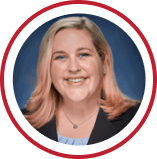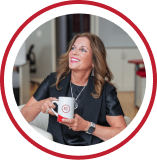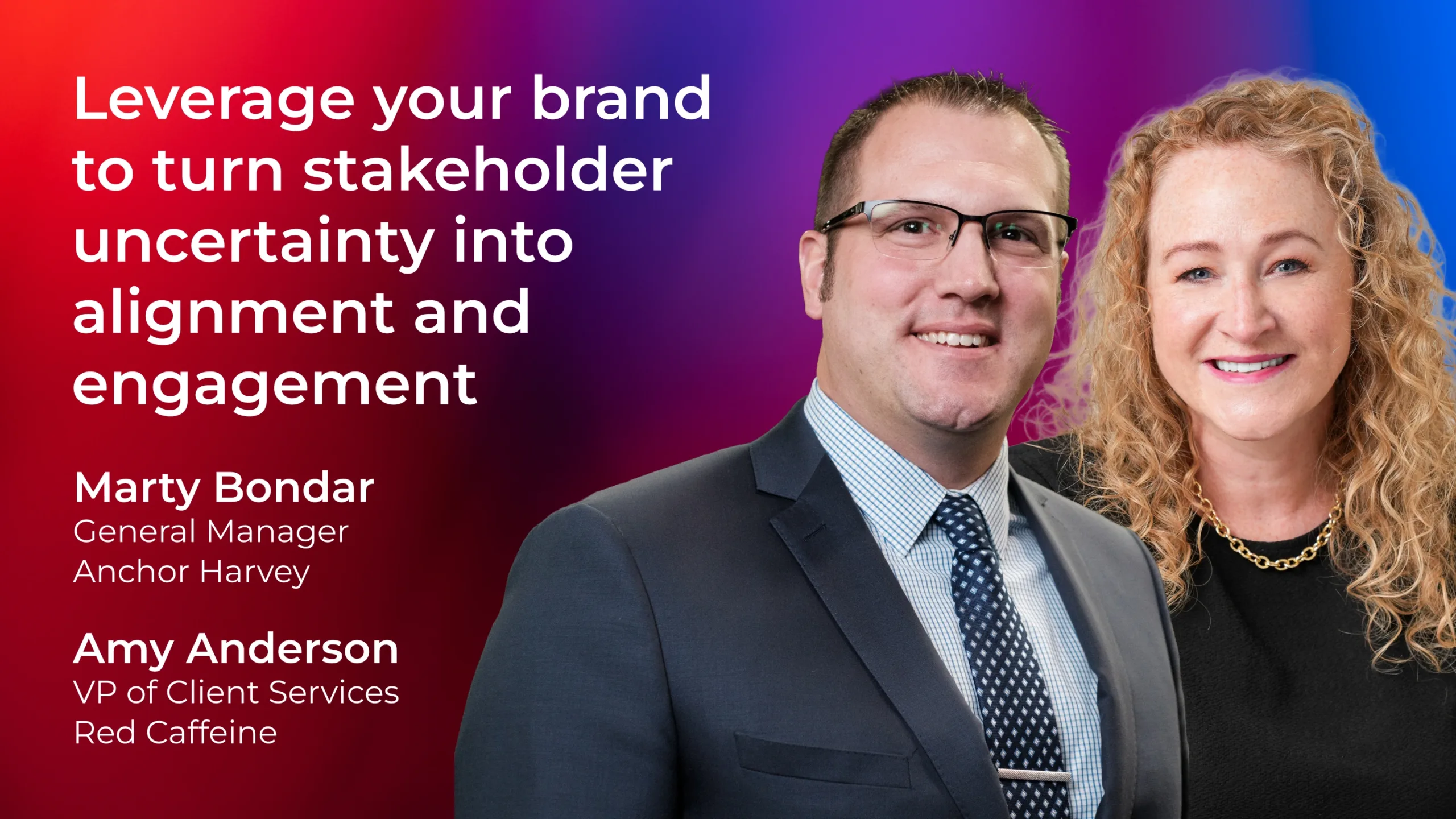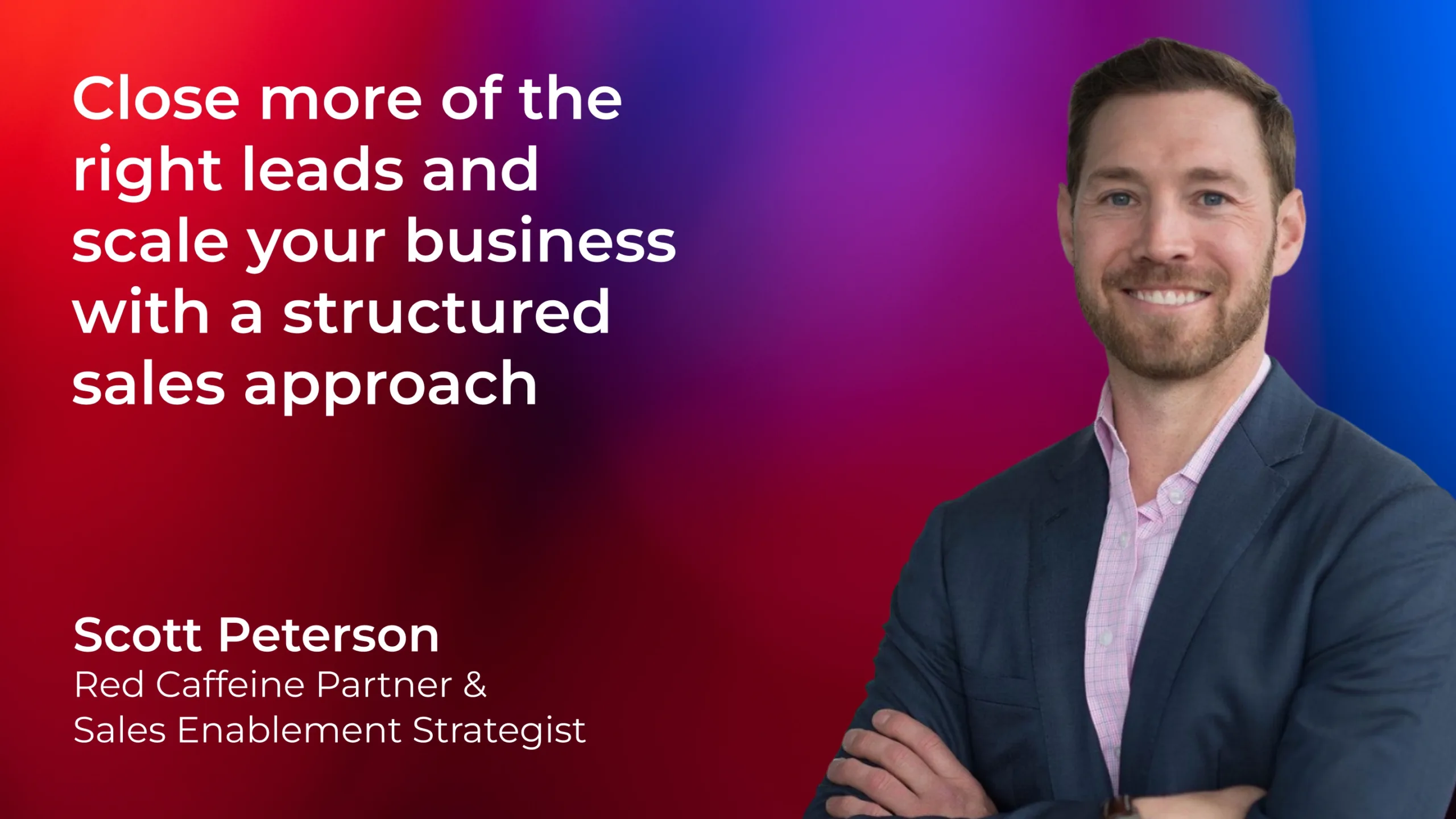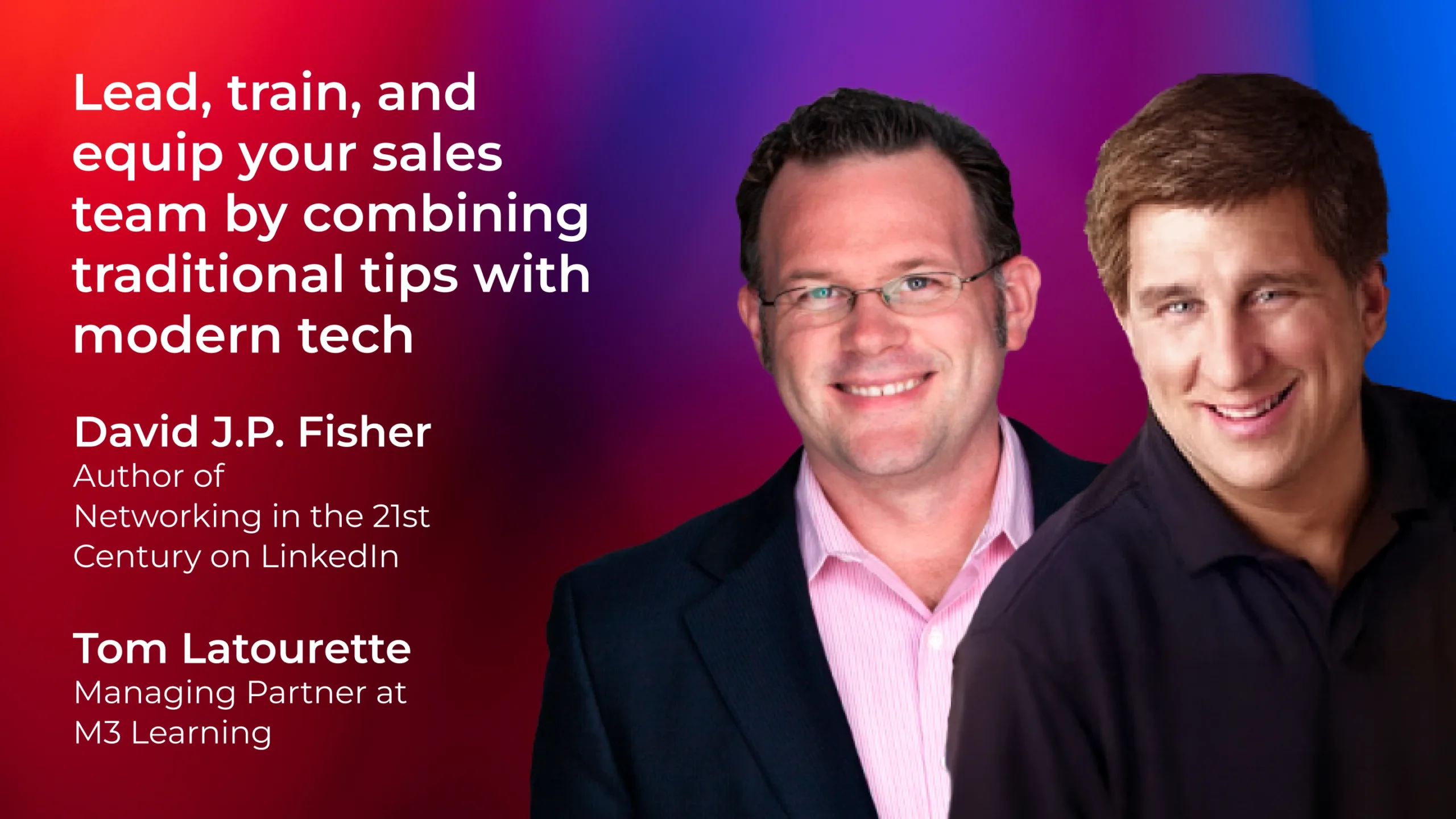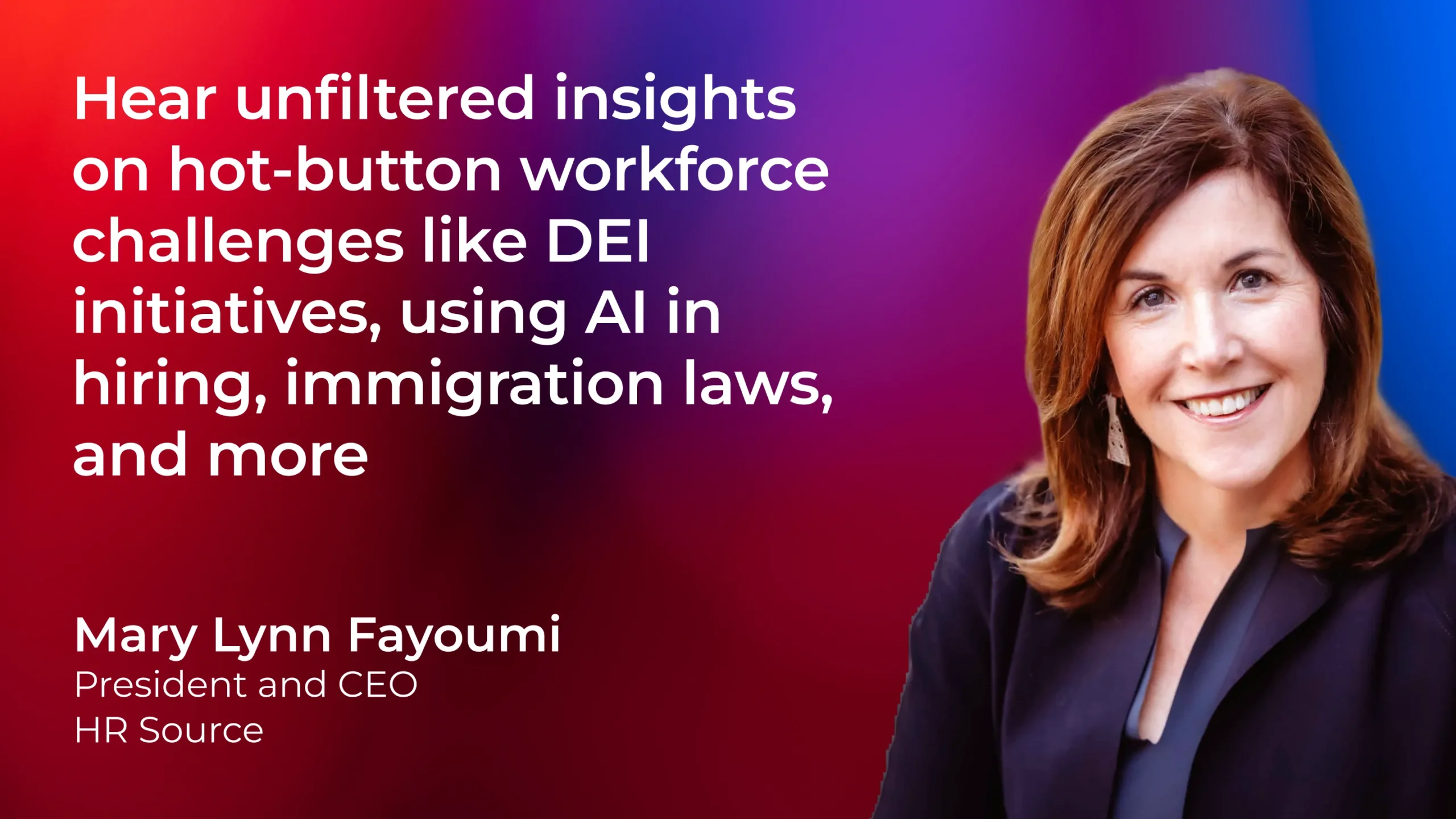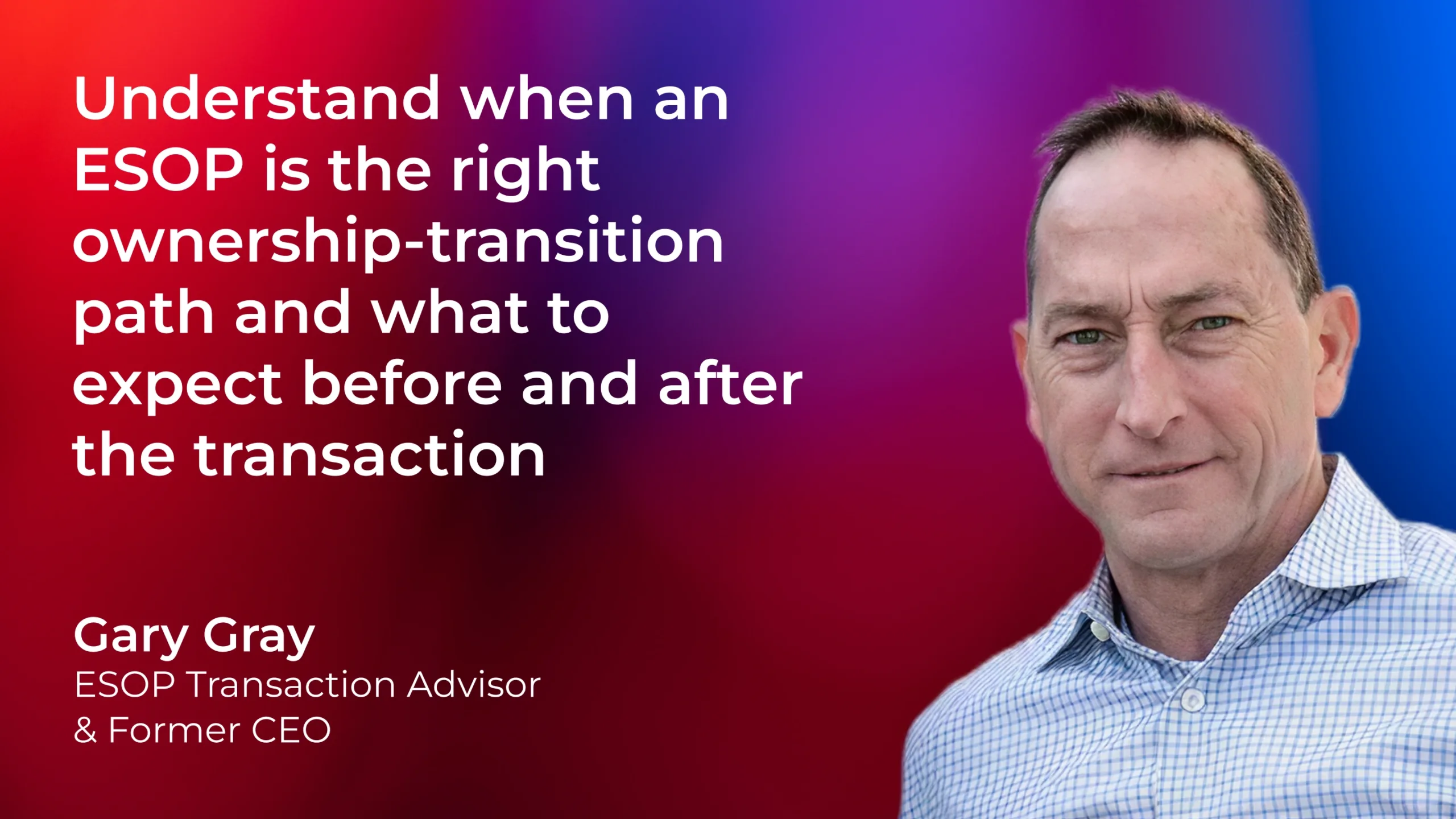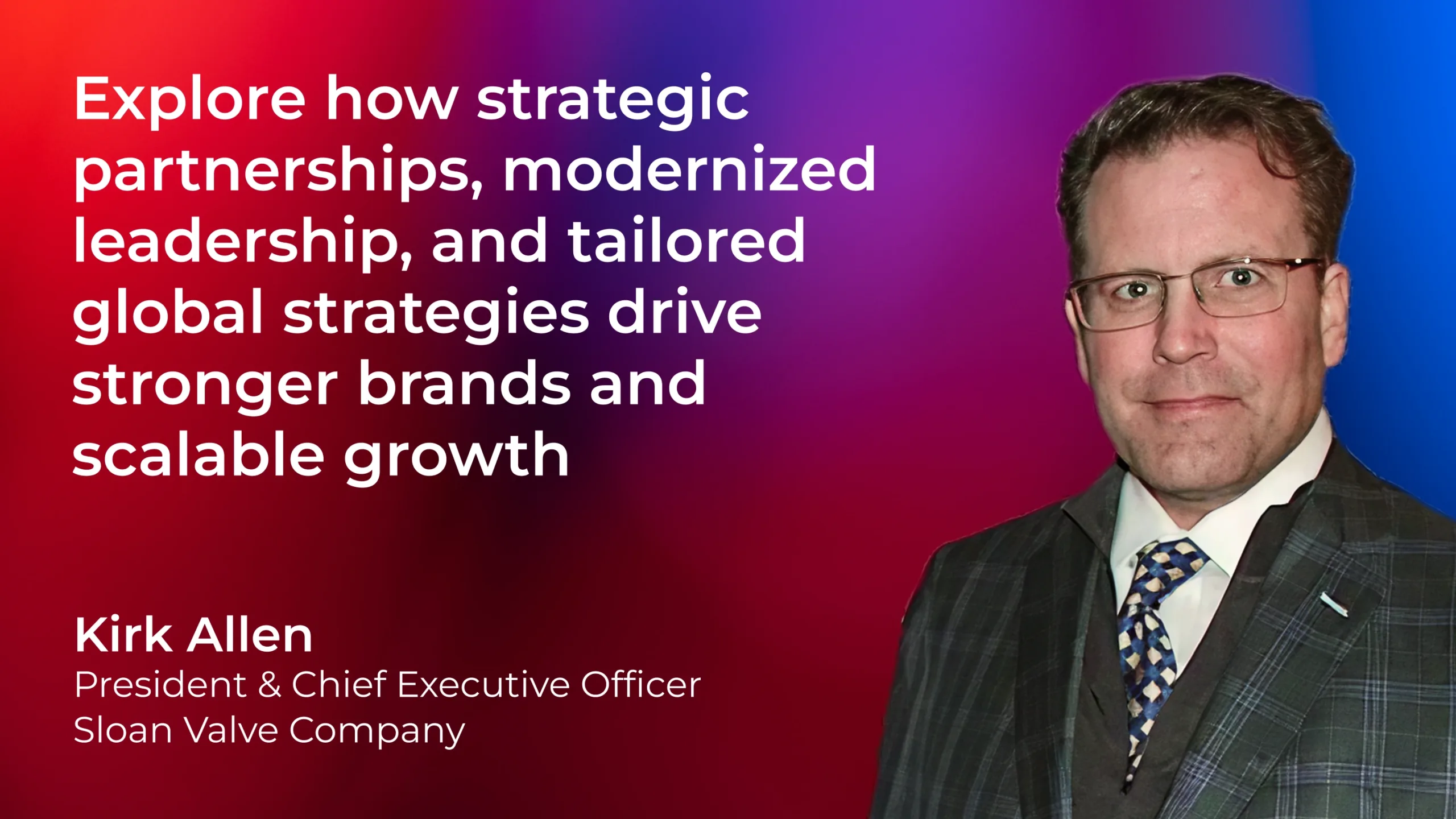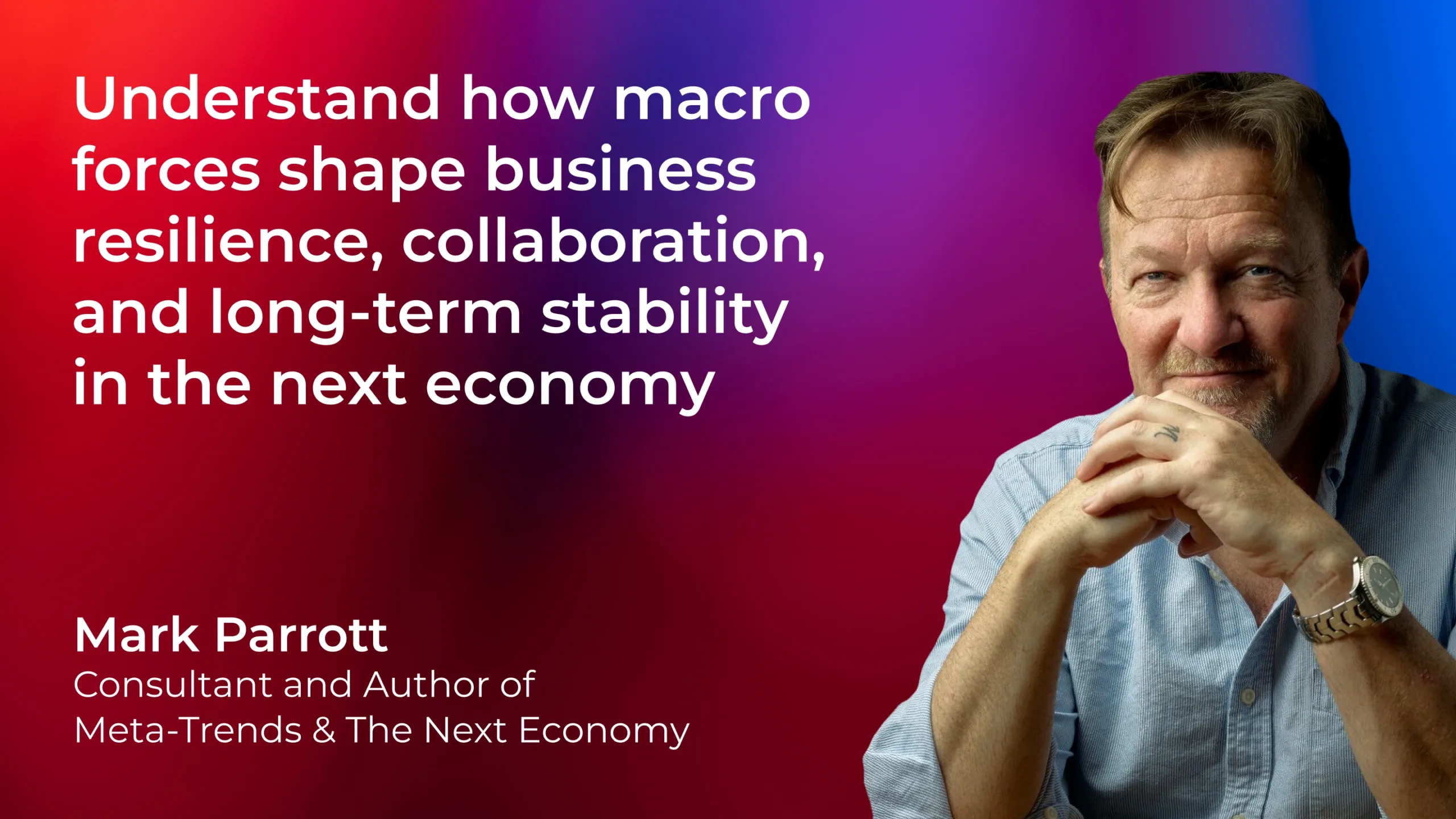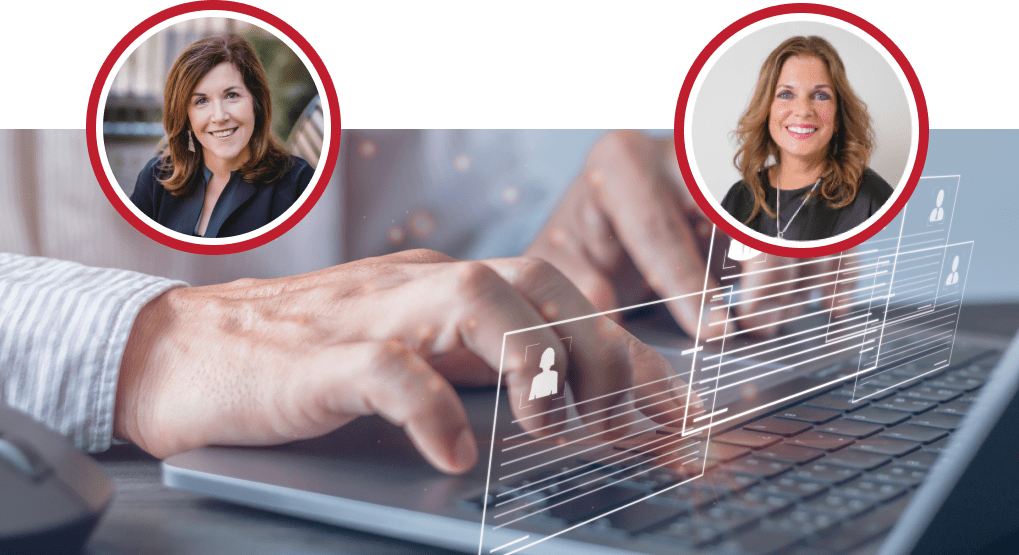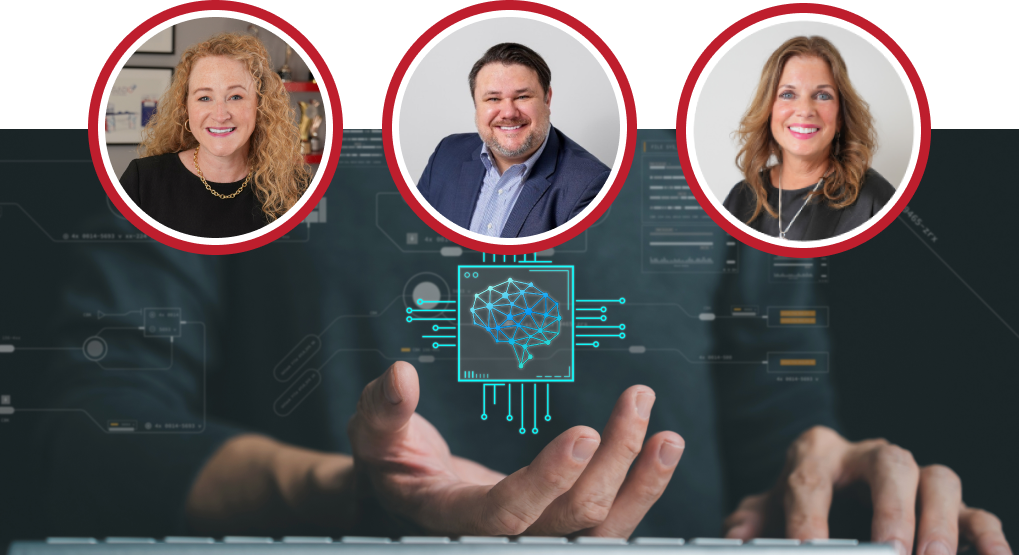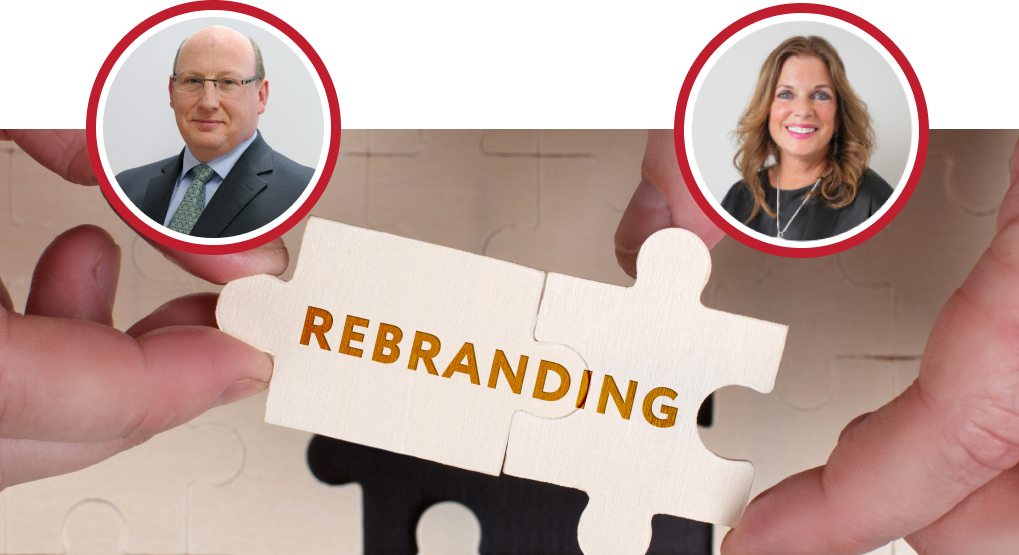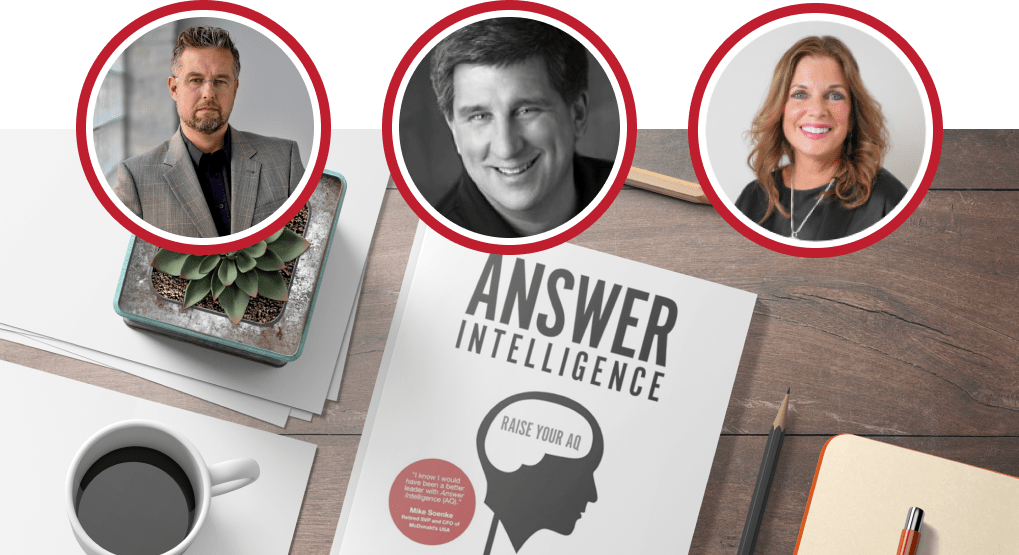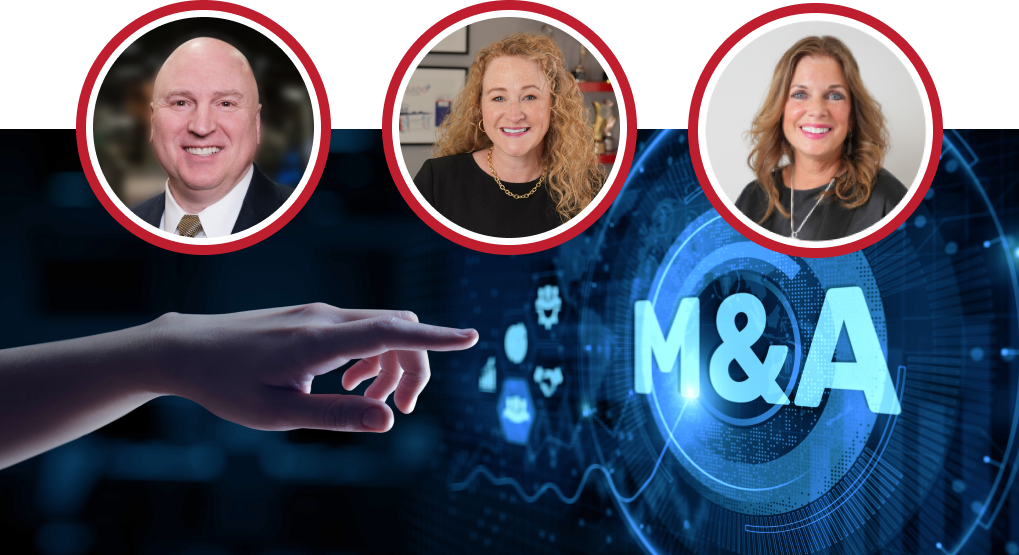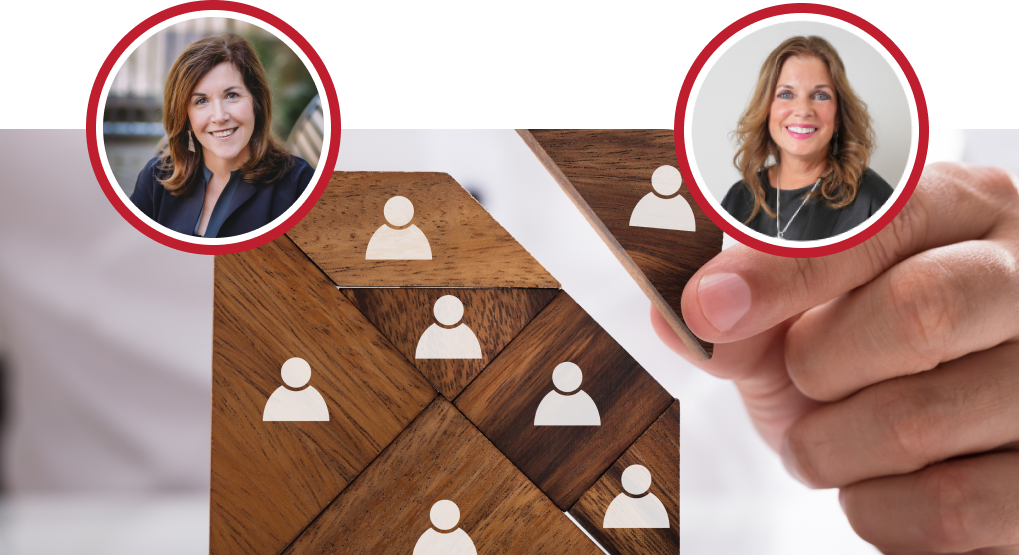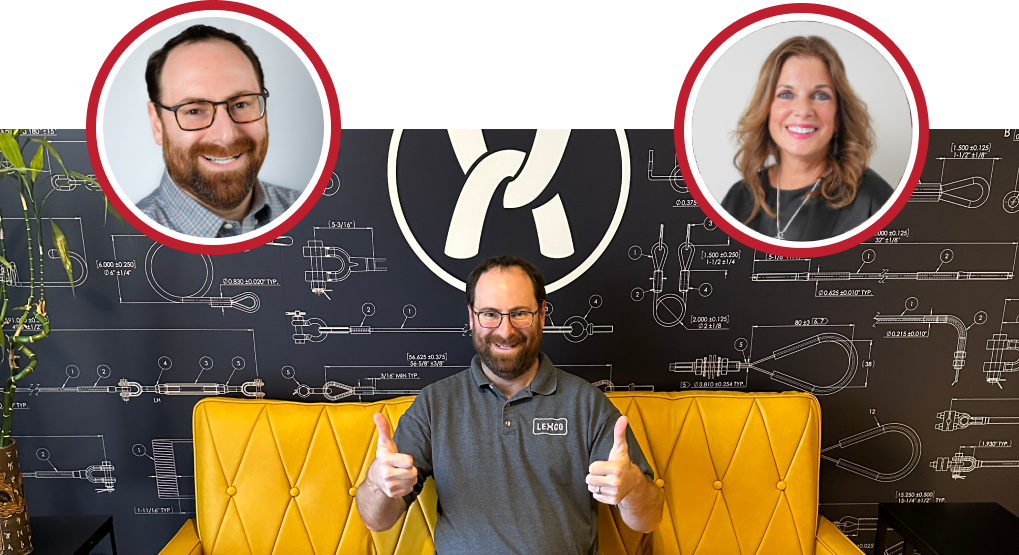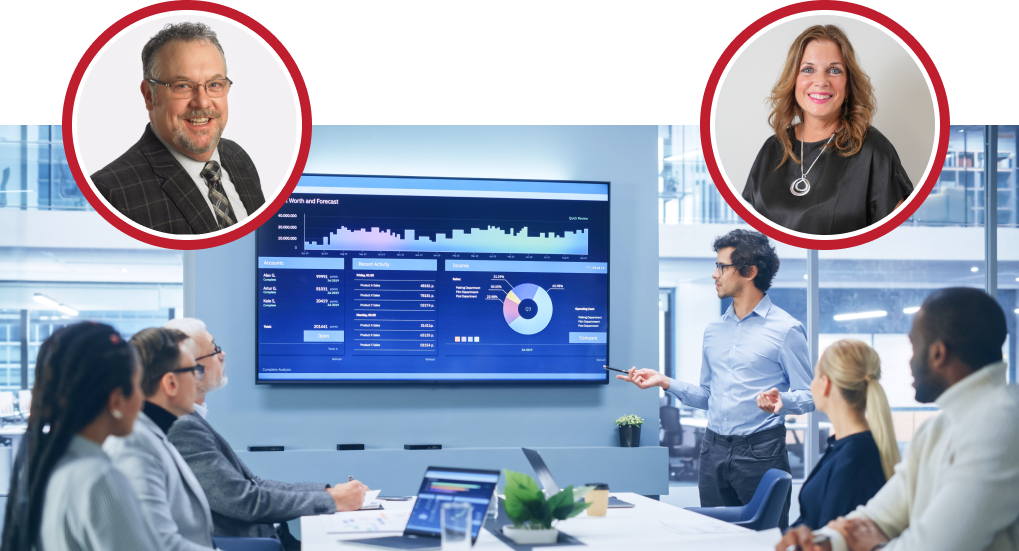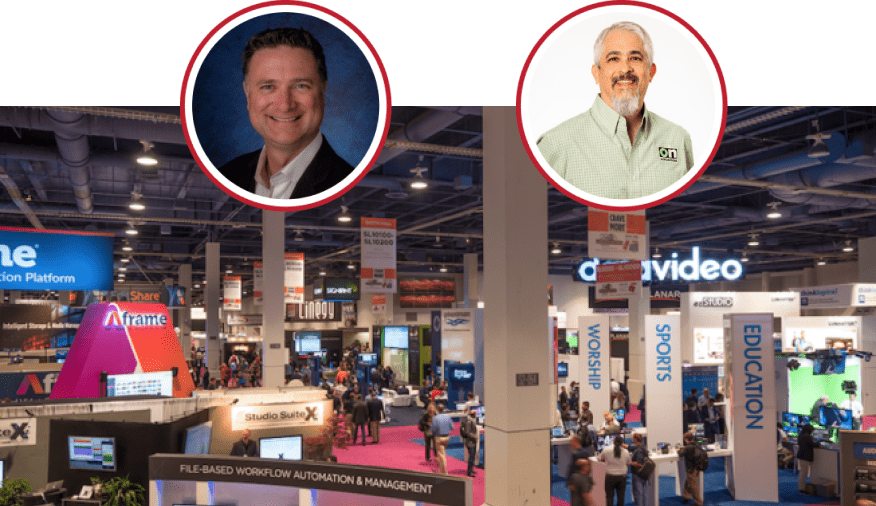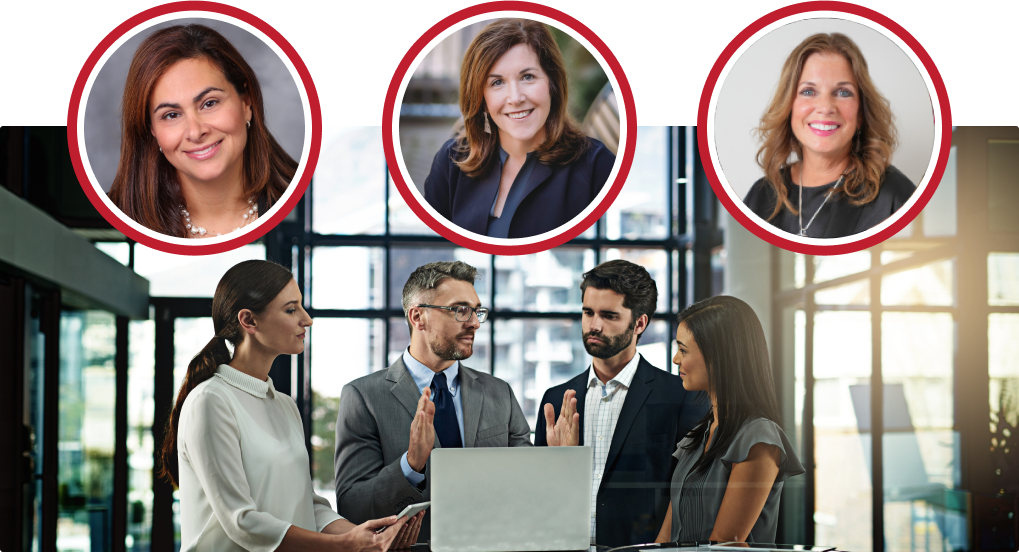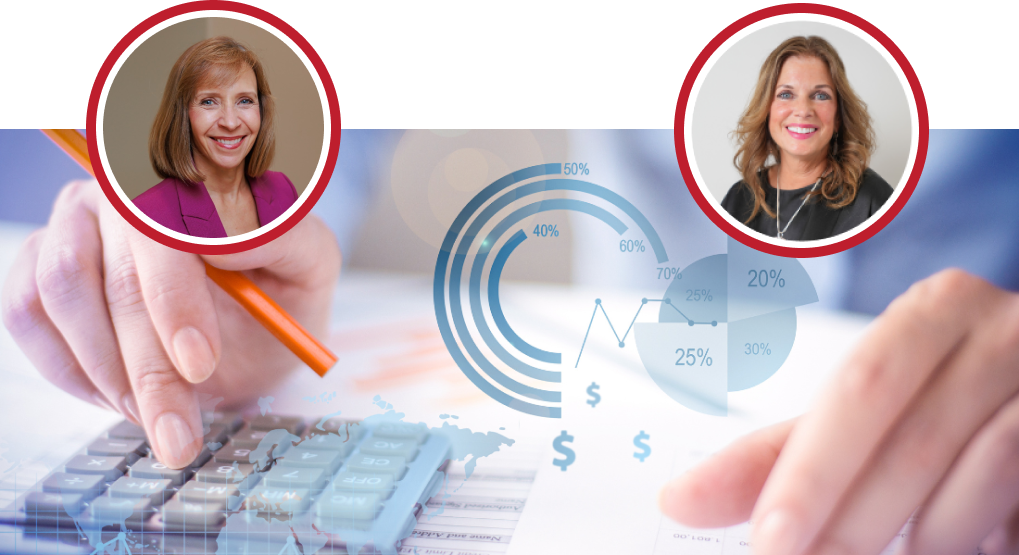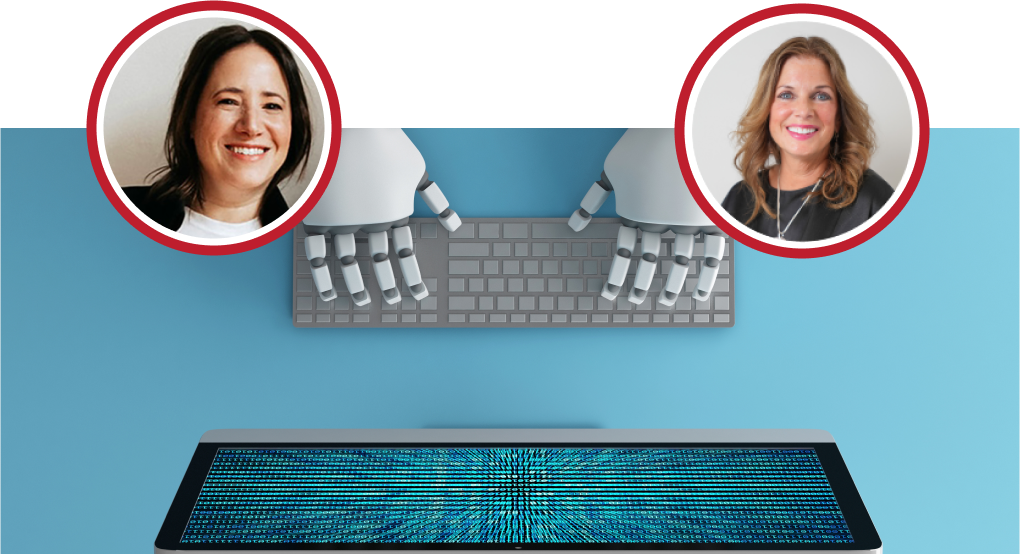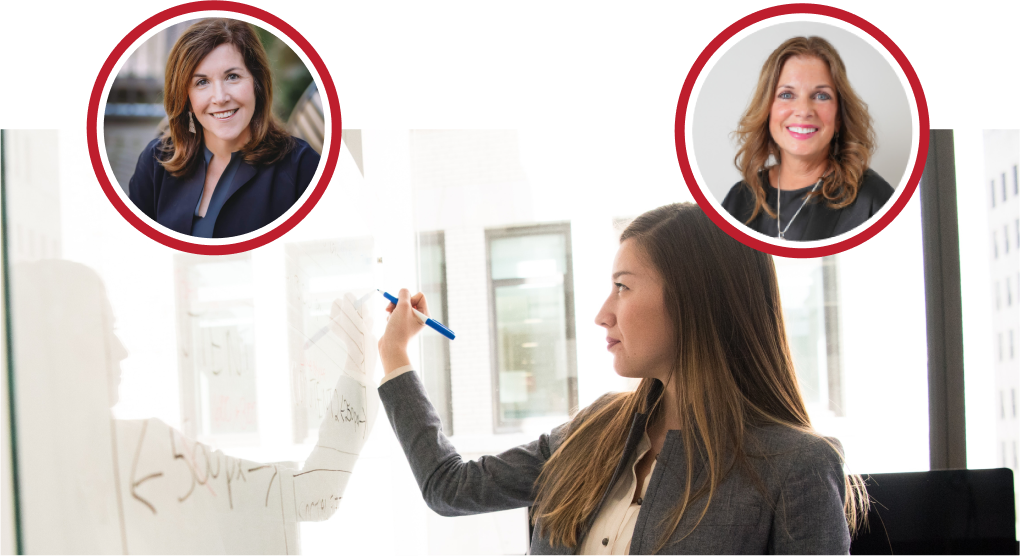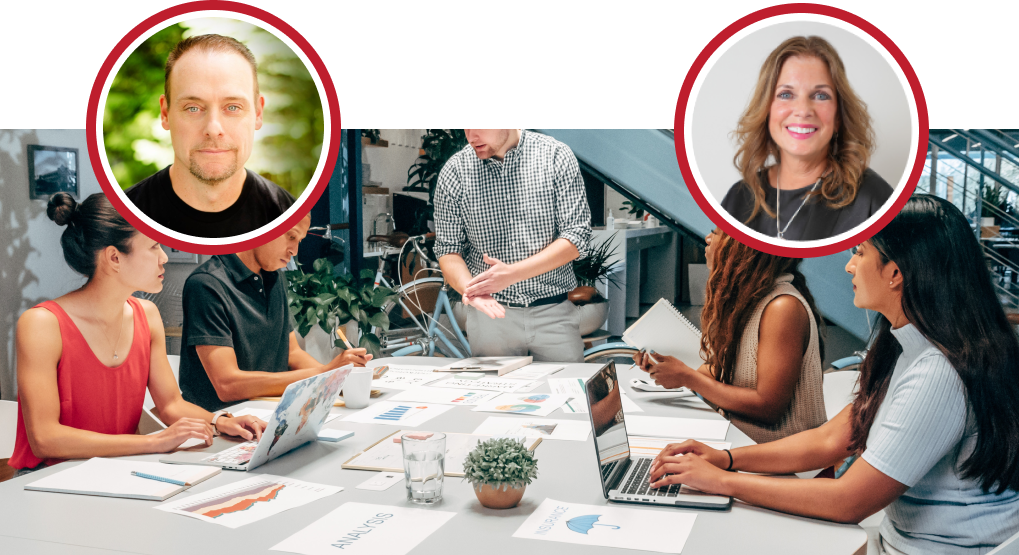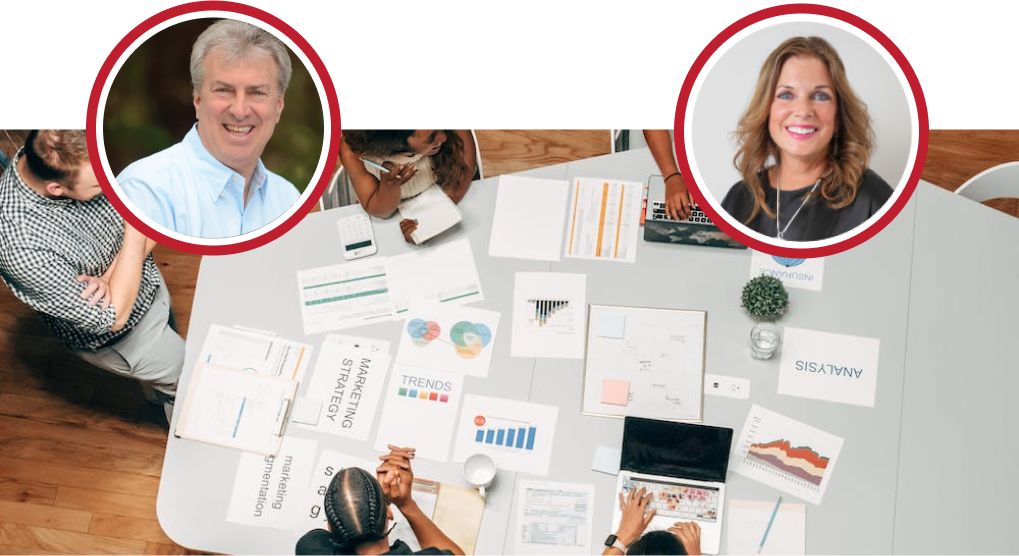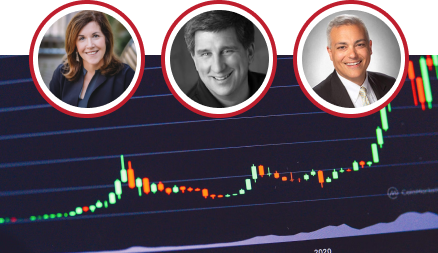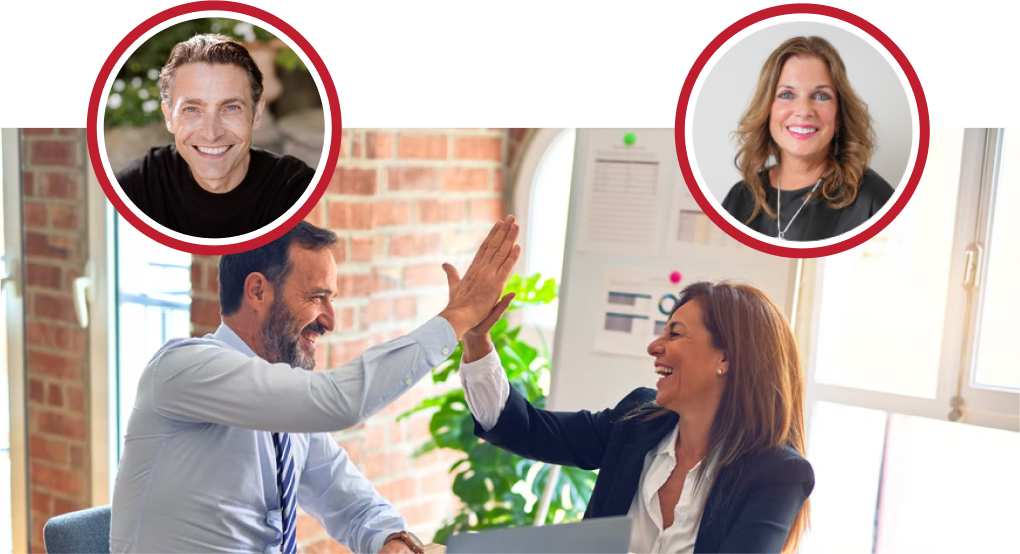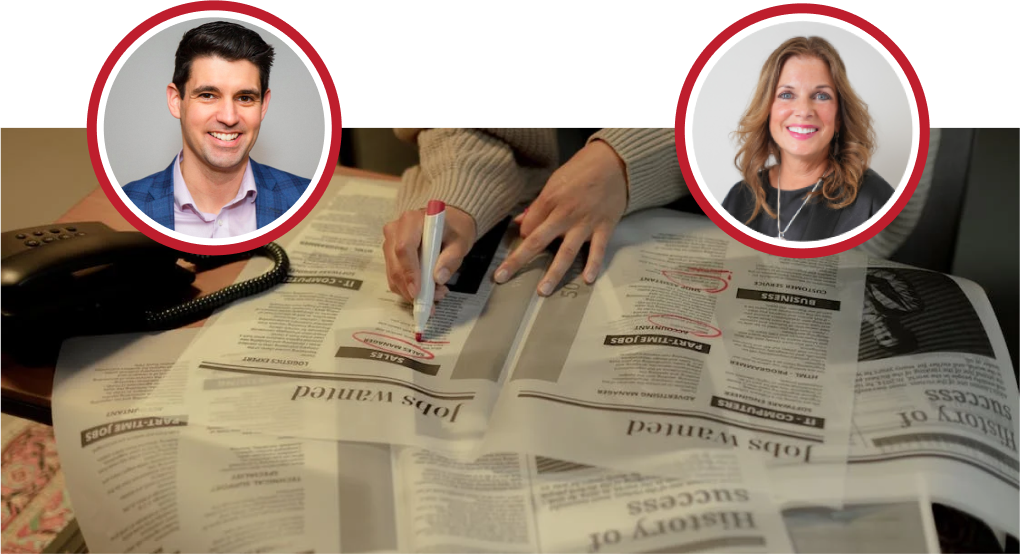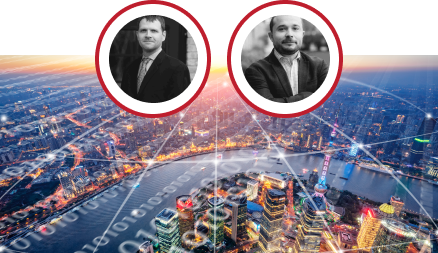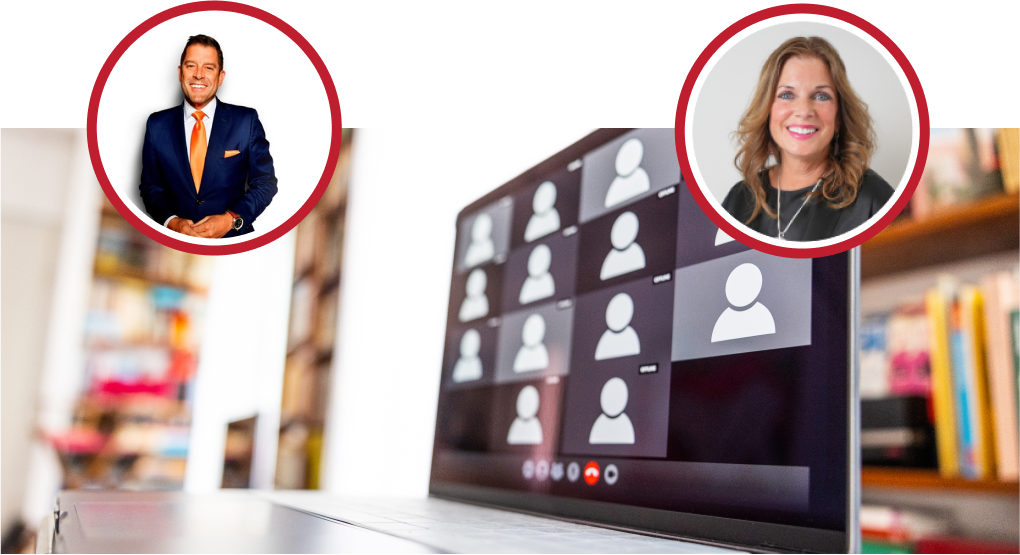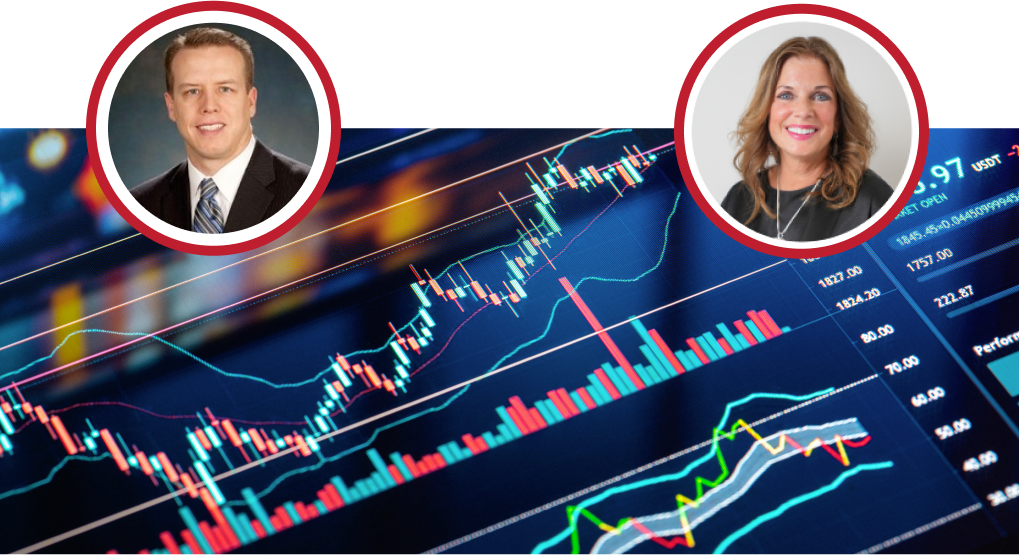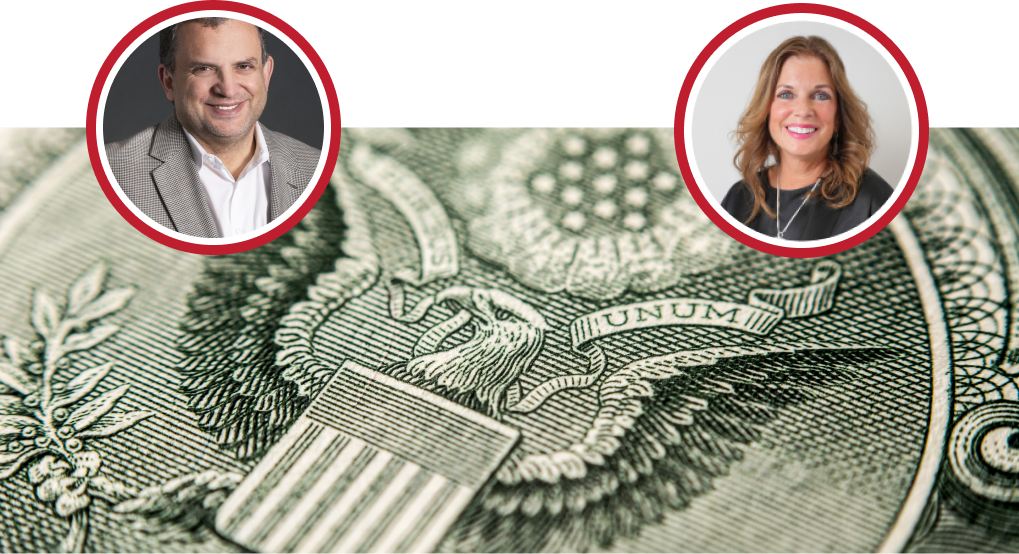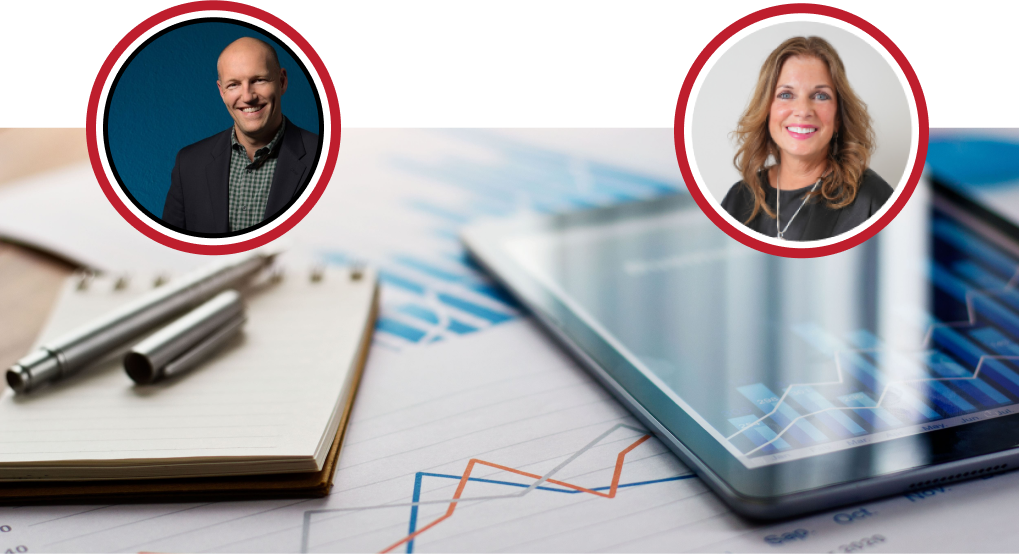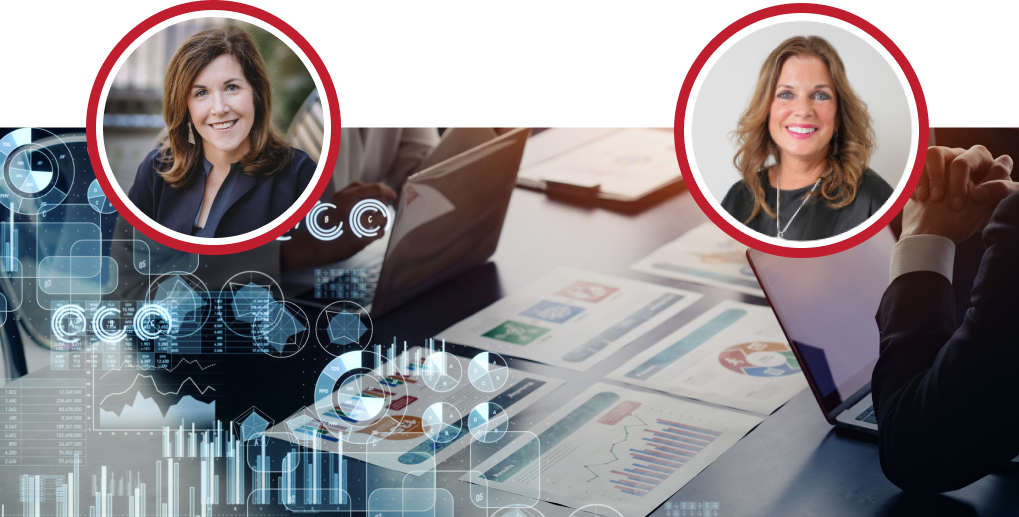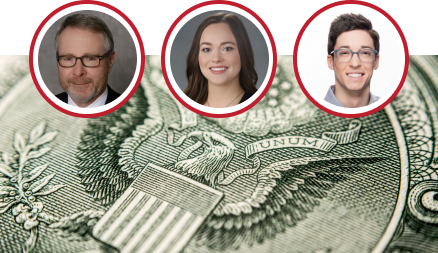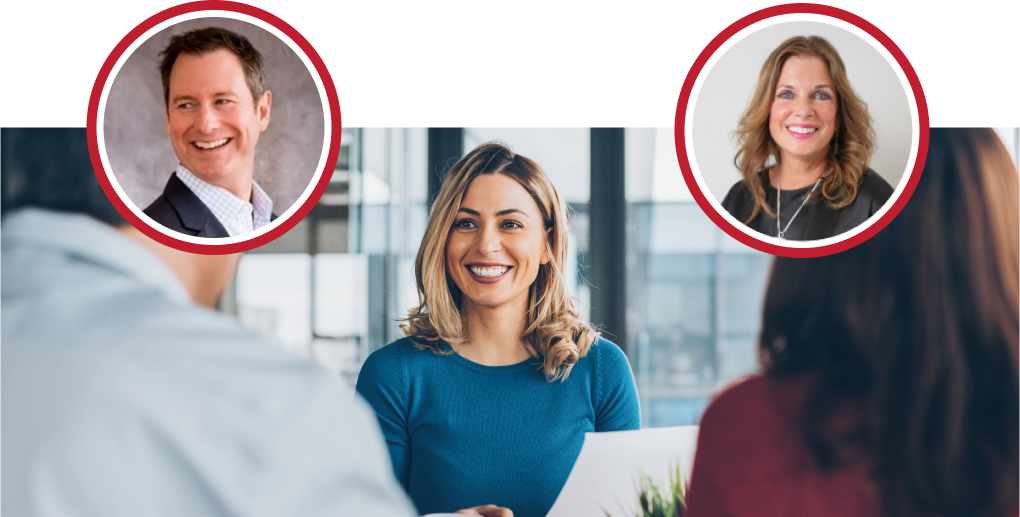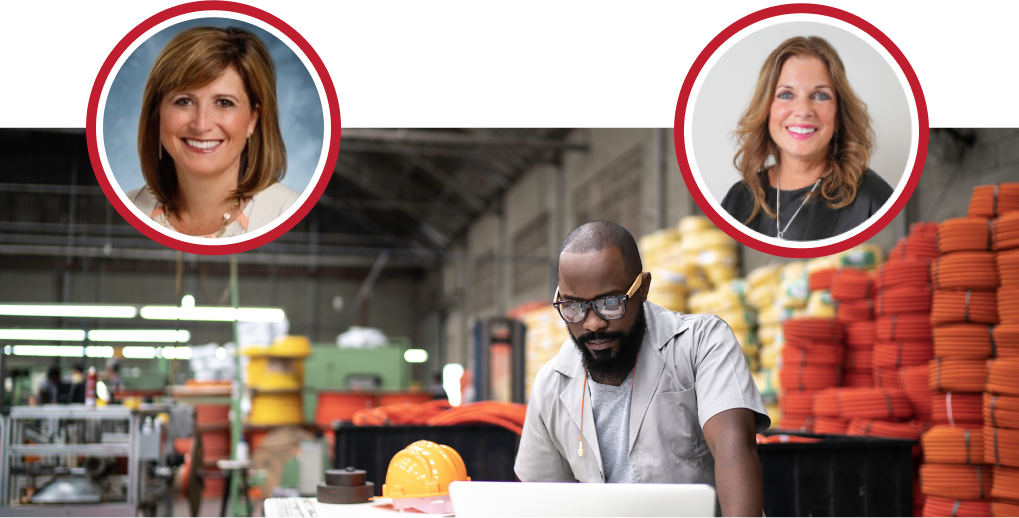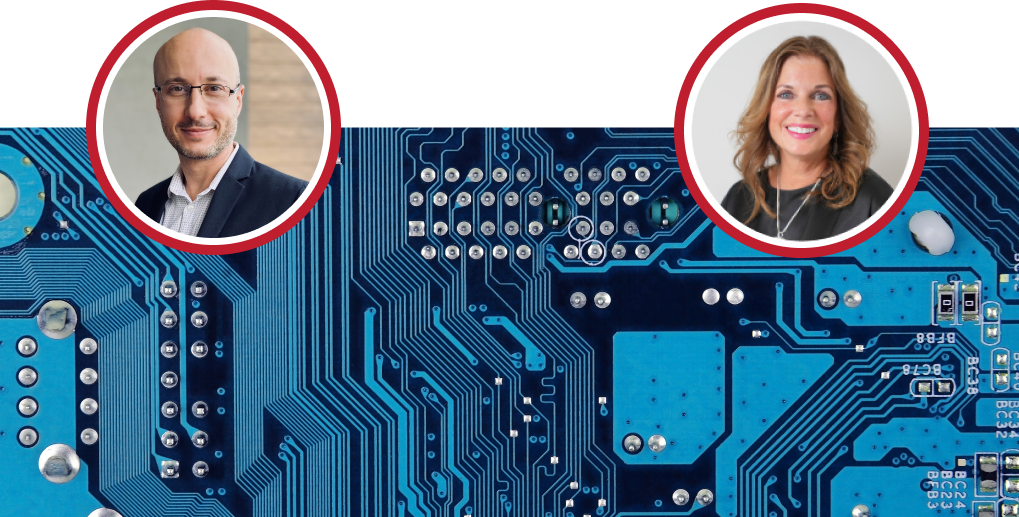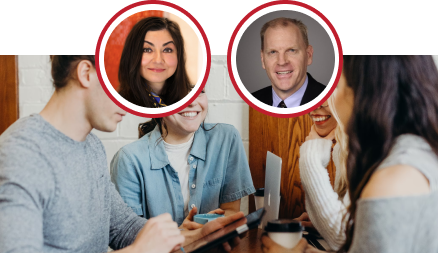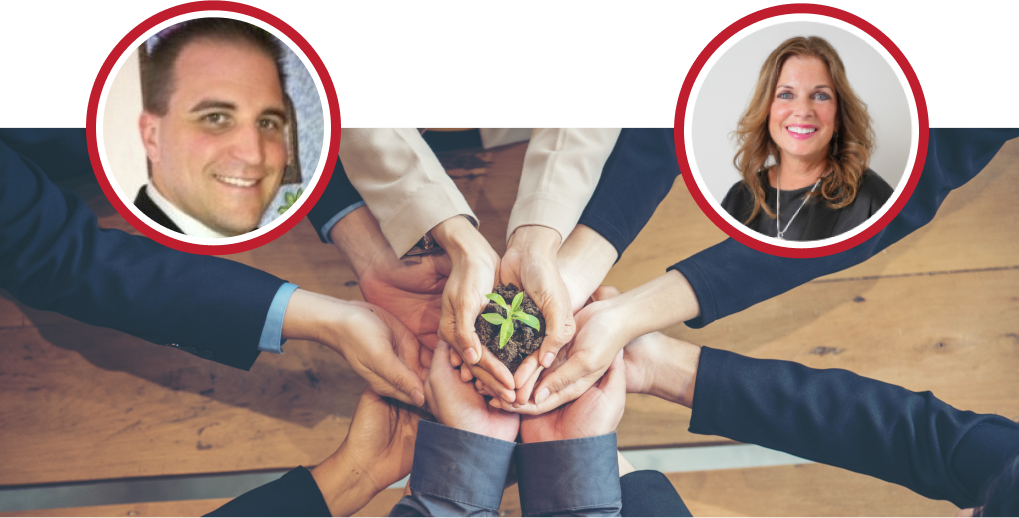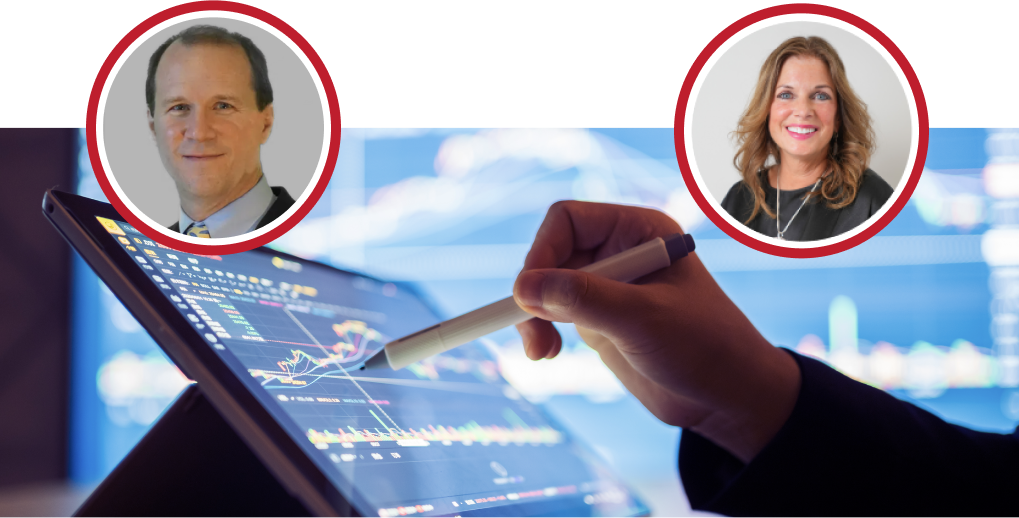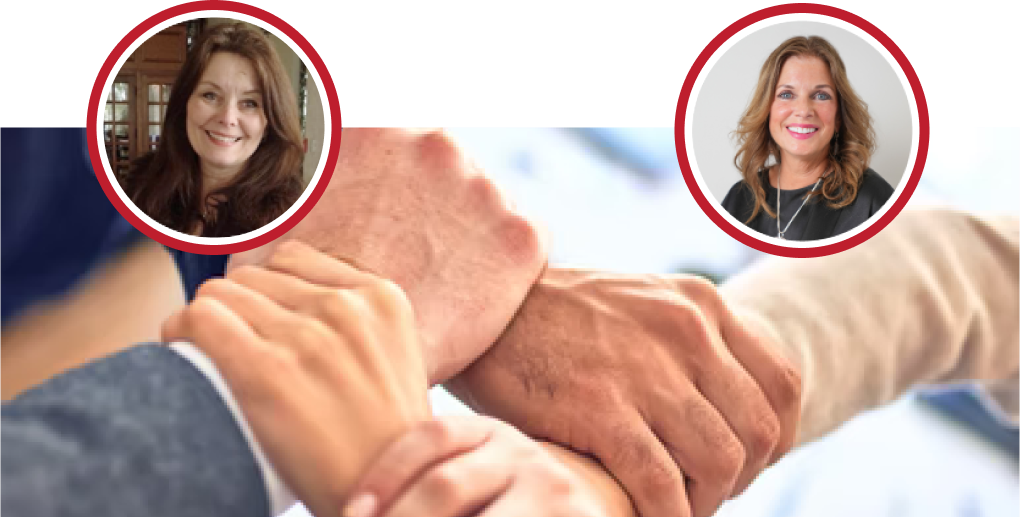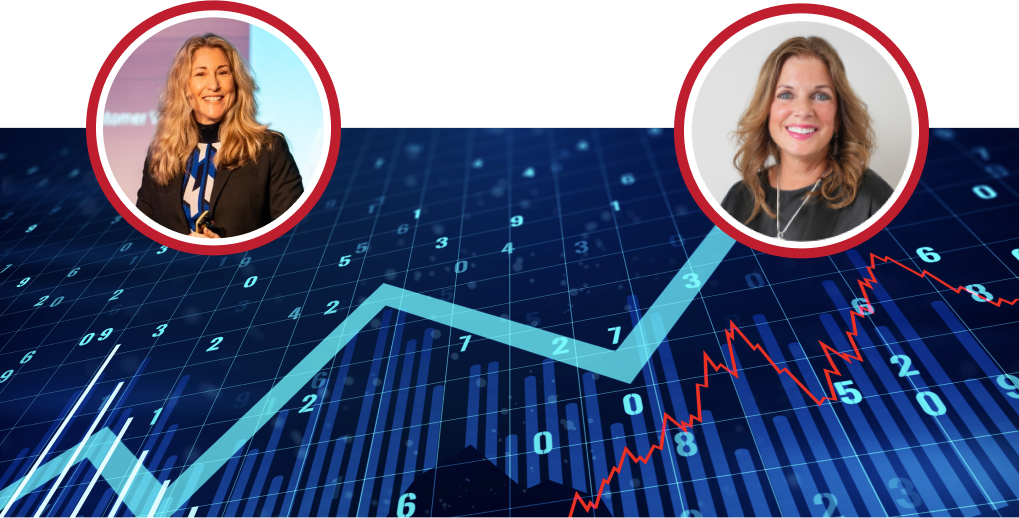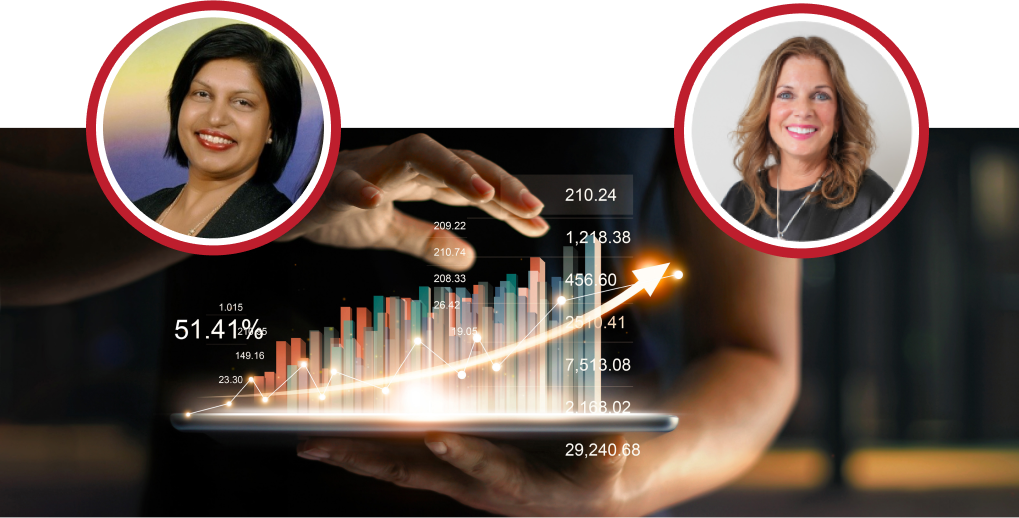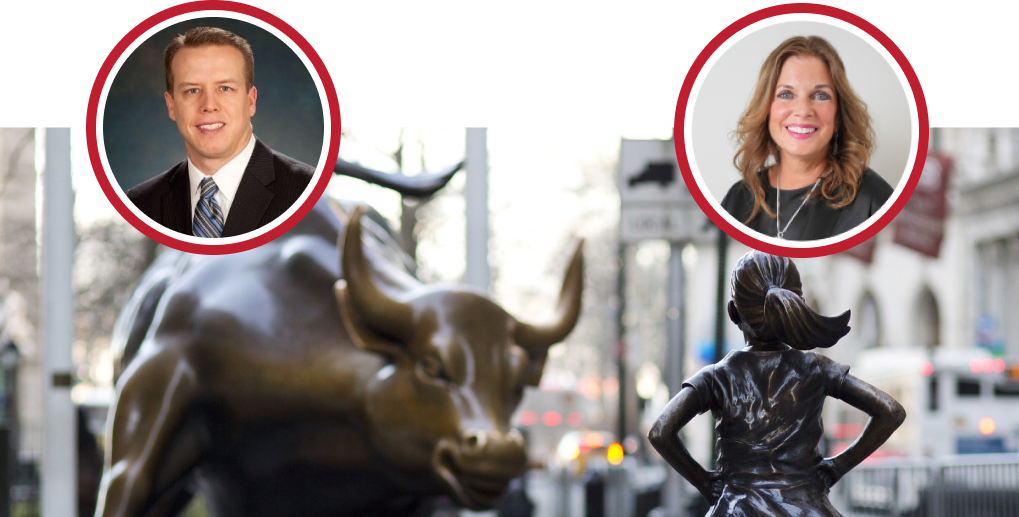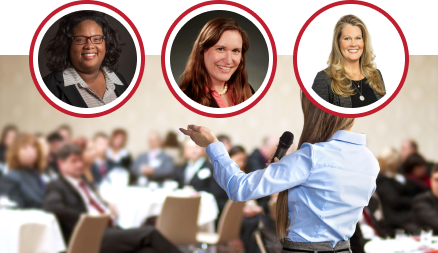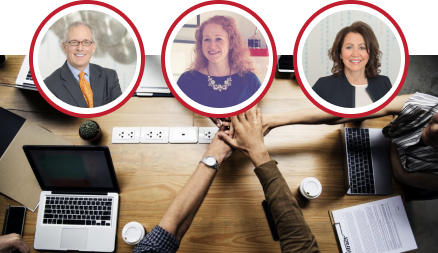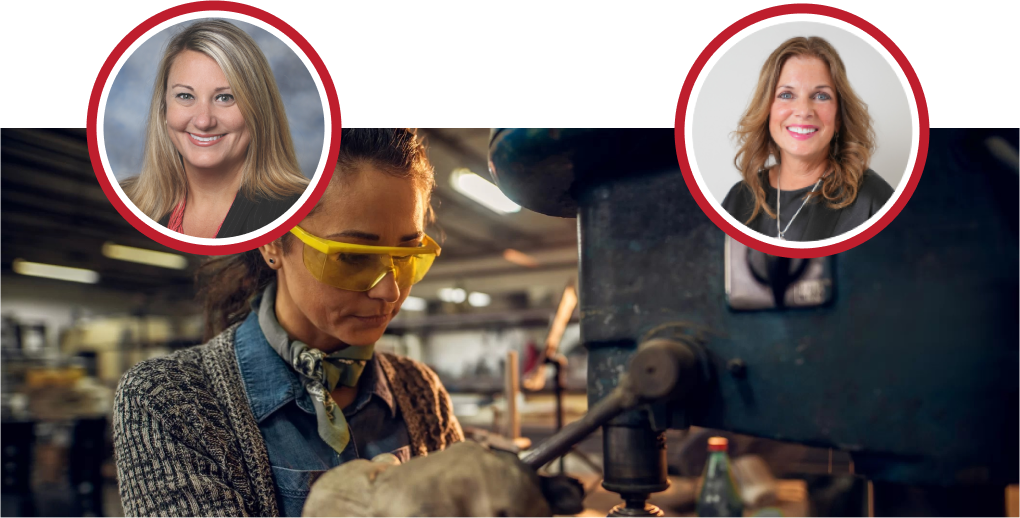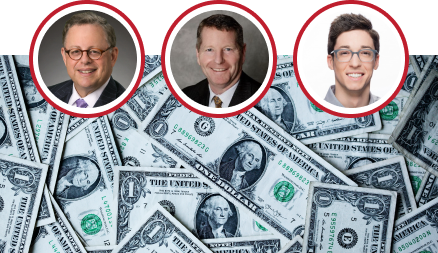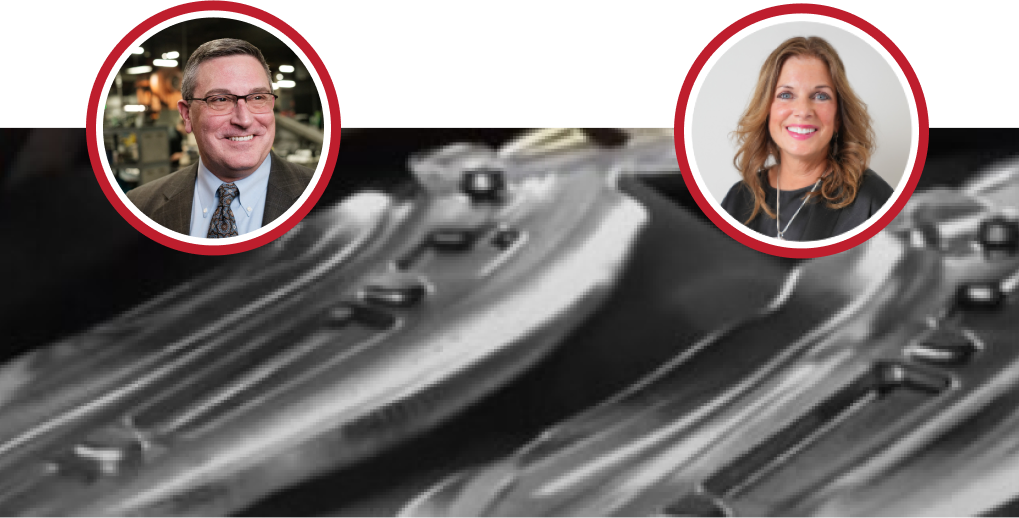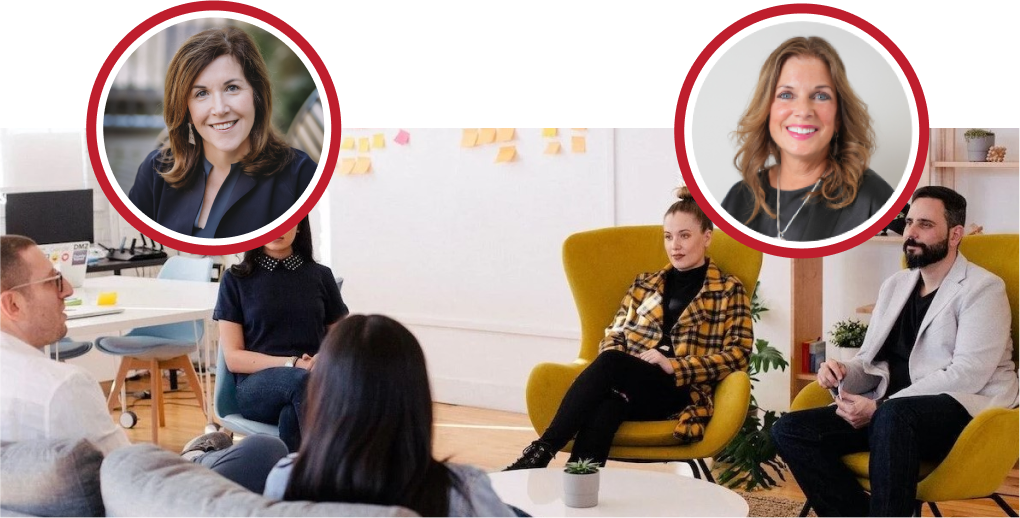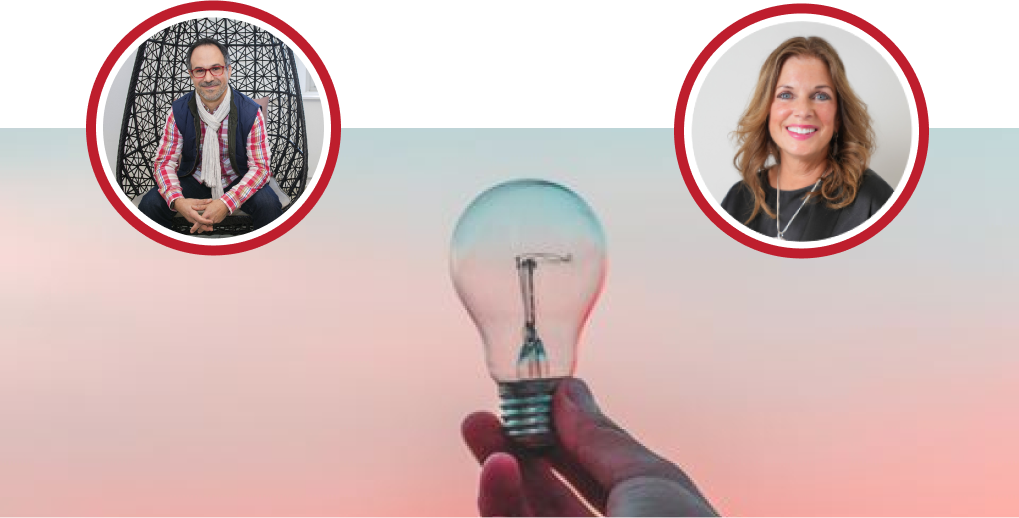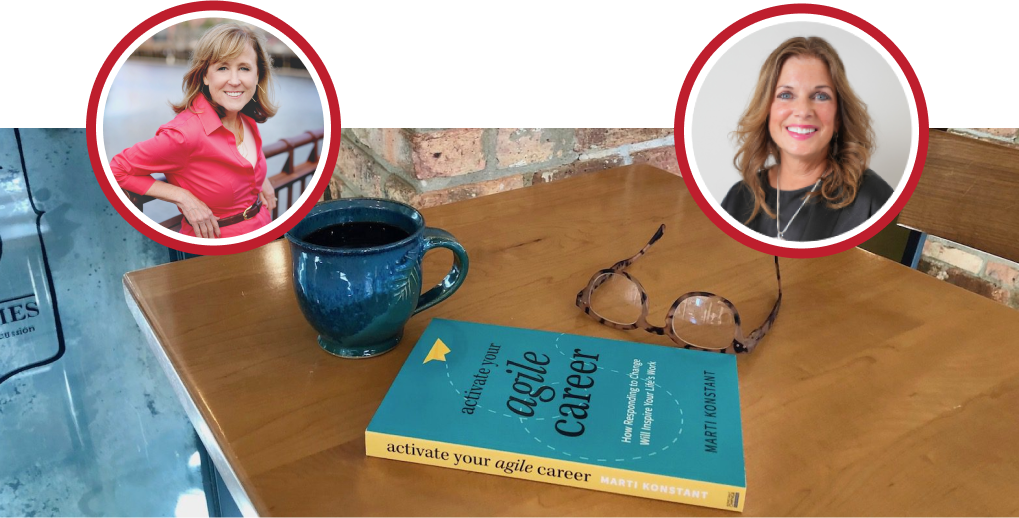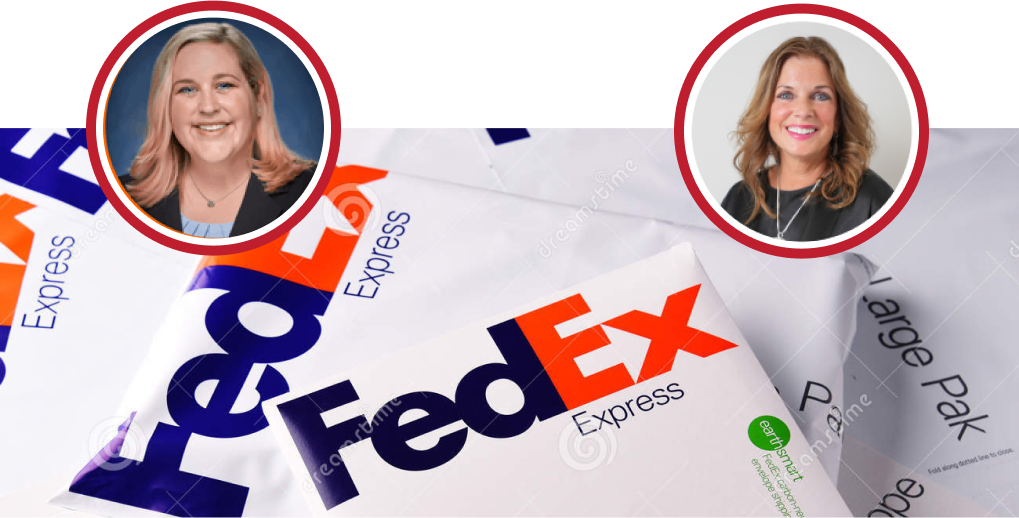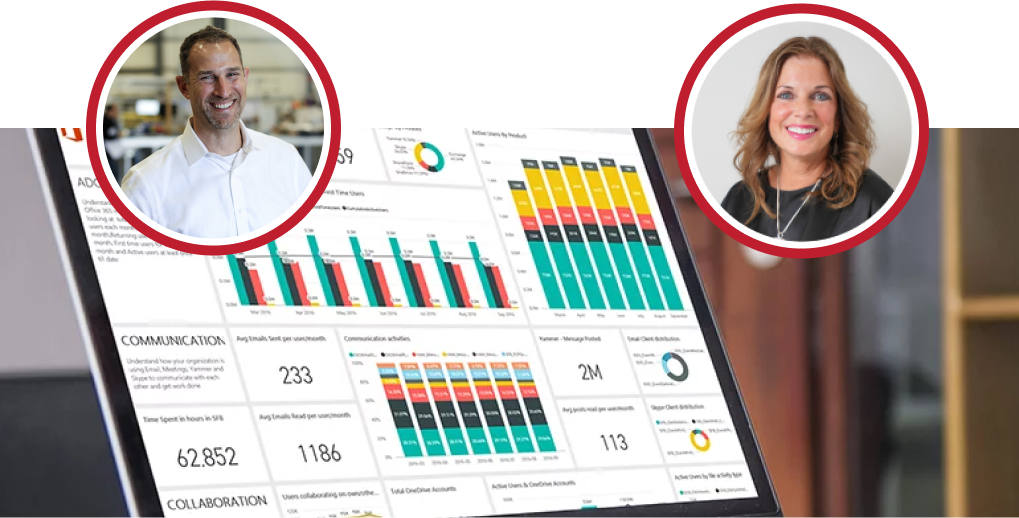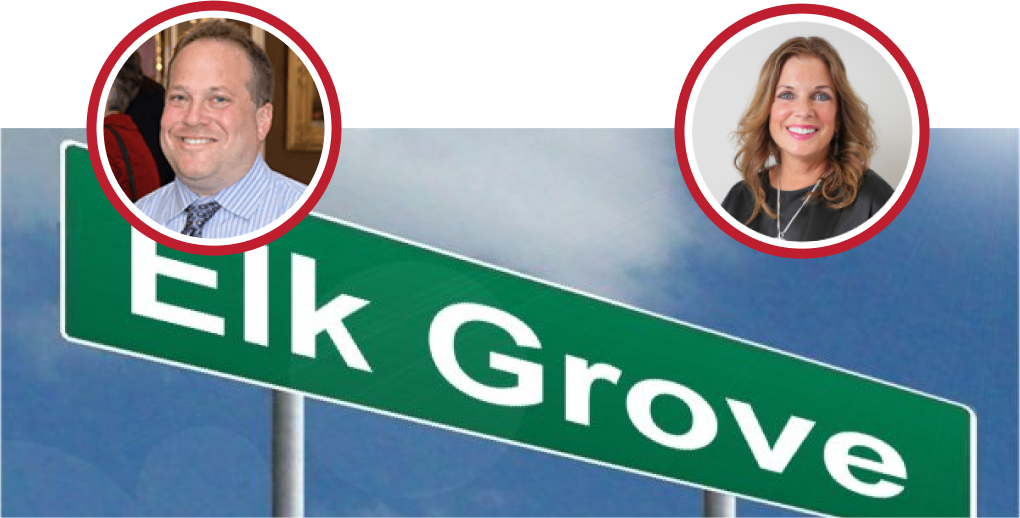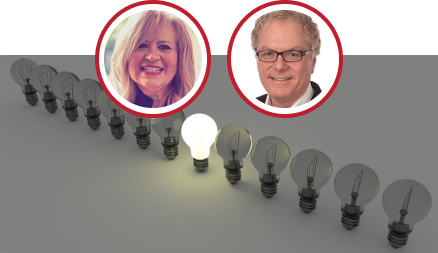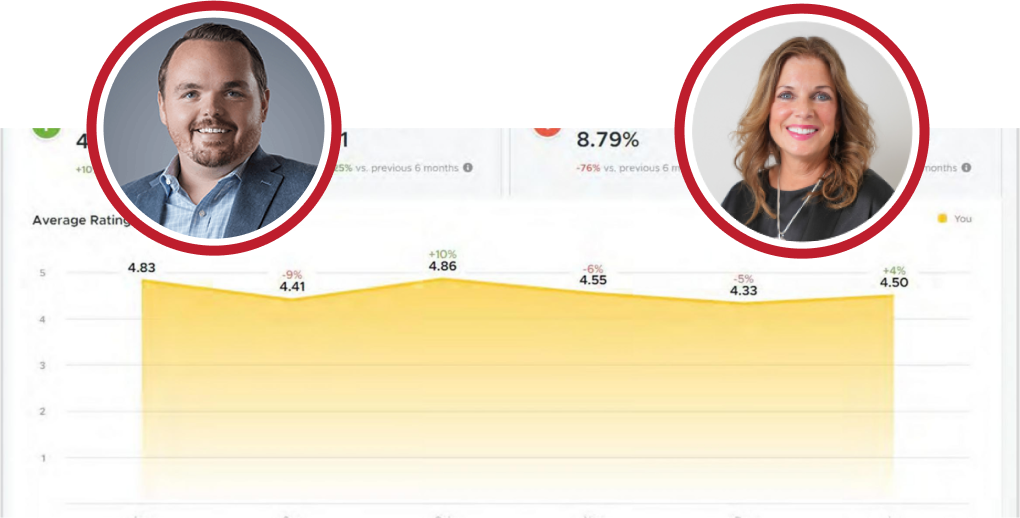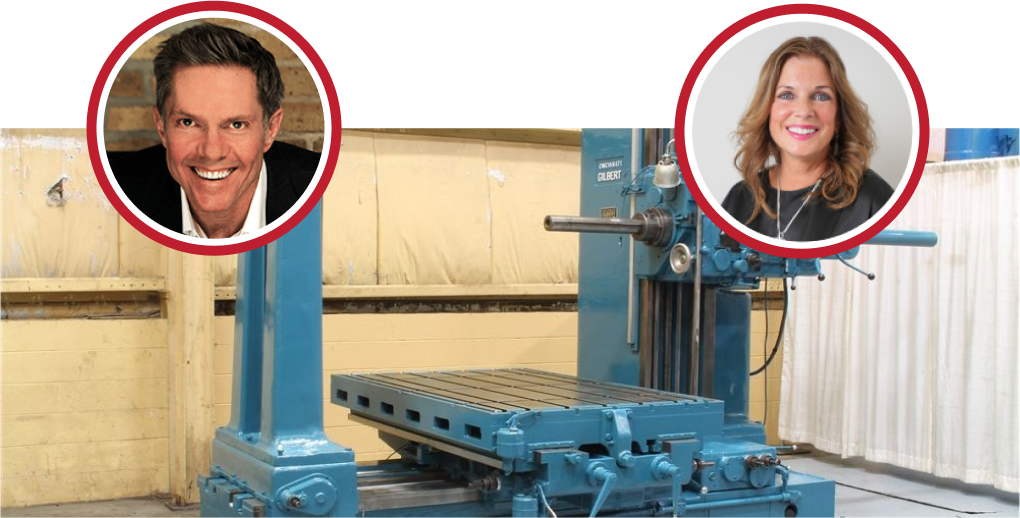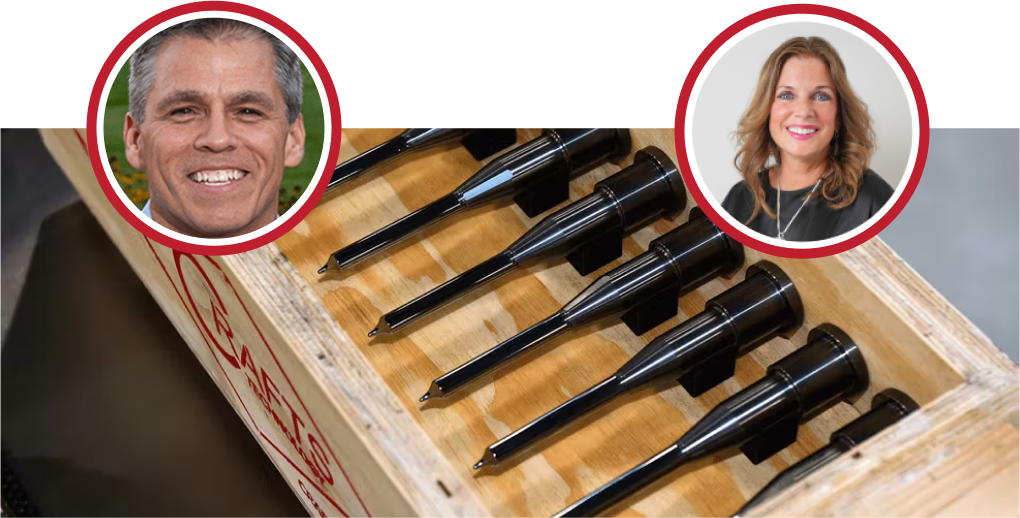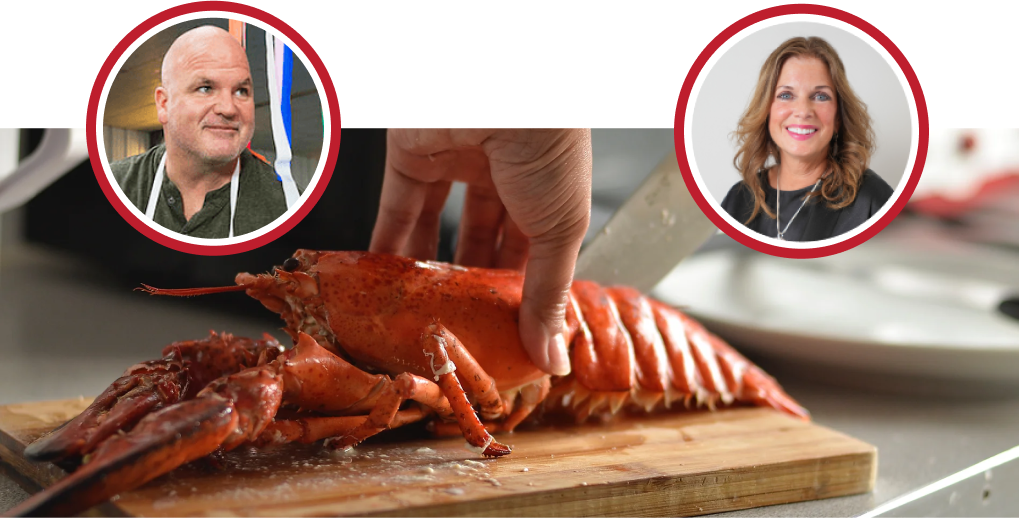Lisa: Welcome everyone to today’s “Business as Unusual” webinar series. We’ll be getting started in just one moment, so be prepared to hear a lot of great information today on how you can continue to help your business as we move through 2020. Great to see faces, Missy. I hope you enjoy your lunch today. Congrats on being one of the first five winners. Welcome, Harv. I hope you’re also enjoying lunch thanks for being one of our first five registrants for today’s webinar; give everyone just one more moment here, so I’m still seeing a few more attendees pop in for today’s session.
Kathy: Finland, wow, cool.
Lisa: You’ll enjoy my maiden name Lucianne with two u’s and two k’s, so welcome, and thanks for joining us today. We’ll go ahead and get started. So again, welcome to today’s “Business as Unusual” webinar series, where we’re speaking with industry leaders on how they are surviving and thriving during the year 2020 and offering stories of inspiration and innovation. We’re very excited to have you at today’s session, where we’re going to be talking more about how all businesses have really pivoted, especially FedEx Express. This 36 billion-dollar company has found unique ways and new ways to approach business, especially as all of us have been relying on them even more heavily for our on-time and urgent deliveries. As a few housekeeping pieces today, we do have everyone on mute, so if you’d like to ask a question. Please use the chat function or the Q.A. option. They’re located at the bottom of your screen. I’ll be monitoring those throughout today’s session and making sure that Emily responds to your questions at the end as a not,e I am as Red Caffeine today, but my name is Lisa Behning. I’m one of Red Caffeine’s account managers. I’ll be the moderator for today’s session like to thank all of you for registering as we noted in our email, the first five registrants today receive free lunch on us as a 20 voucher to help support the restaurants in their local area that have been so hard hit during this 2020 economic climate. We did have one order placed so far for the local jersey mike subs and looking forward to seeing what our other registrants select as their lunch option for later today. With that, I’d like to go ahead and introduce Kathy Steele, principal and owner of Red Caffeine will be our host for today’s session, as well as Emily Brown, managing director of global compensation and people support at FedEx Express. So welcome Kathy, welcome Emily.
Kathy: Thank you, Lisa; welcome, Emily. I am really excited to have you as our guest today. We met almost three years ago at a compensation conference, and I never really thought an H.R. conference could be so fun. Still, it was just great to get to know you and maintain our relationship for the past few years, and so really happy to have you here, so I got to learn more about your background and career. Still, I’d love you to let’s just start there. Tell us a little bit about your education, sort of some things about your work history, and what’s gone on in your career at FedEx because it’s a pretty interesting career journey.
Emily: All right, absolutely, so hey, my name is Emily Brown. As Kathy and Lisa said, I’m the managing director of global compensation, and people support at FedEx Express. I live in Memphis, Tennessee, which is the headquarters of FedEx. I work for FedEx Express, which is the airline or the airline arm of FedEx, so when you think of FedEx, there are four main entities under the entire FedEx umbrella being FedEx Express, the airline piece of it, FedEx freight, obviously the trucking piece of it, FedEx ground, and then FedEx services, which is a support arm that supports all of the different operating companies. So, I got my undergraduate degree from the University of Tennessee in human resource management and international business a huge regret in college was that I didn’t actually go abroad and didn’t have that international experience, so I stayed within the state coming from Memphis, Germantown, Tennessee and going to Tennessee but really regretted not getting that global perspective in that international experience. So after my undergraduate years, I got my master’s degree in international business, I got an international MBA, and it was a partnership with the University of Memphis and the University in Germany, so I did an internship in Germany at the derivatives part of the Frankfurt stock exchange as well as studying. So, I studied in both English dot as well as lived in Frankfurt from the derivatives part so came back to Memphis, so I laughed in a lot of ways. I came home to Memphis from Knoxville, and coming home actually took me further away from a global perspective, and when I came back, it was really one of those challenging times from a government-type perspective where we were and where the unemployment rate was, and really nobody was hiring except for the government. I got a job with Booz Allen Hamilton as a consultant for the U.S. navy doing compensation and retention strategies there. Then Obama started looking more towards government service, and I loved my time at booze great experience working with the navy would have stayed on there, but I was really going away from the contractor model and going towards more of a government service model, and when I’ve gone to different companies, and I’ve worked in different places I want to believe in the company that I work for and so what led me to FedEx was I’m normally a very detailed person, and when I was 16 years old I had gotten I traveled abroad I had gone to Costa Rica. I had my passport for the first time. My passport expired when I was 26 years old when I was getting married, and I realized, oh my gosh, my passport had expired. I was about to get married and about to go on a honeymoon. I was that person that literally ran out there and hugged my courier as he showed up with my passport in time for me to save both my to save my honeymoon and stuff, and so when I looked at it from a company perspective, I believe in what FedEx does and what FedEx offers. So from that perspective, it’s one that I wanted to work for a company that I really knew the value of it, whether it was getting medications or saving somebody’s honeymoon with a passport, and so, I started looking at different opportunities and found my way to FedEx. So, I’ve worked at a number of different places within FedEx. My resume on paper doesn’t make a bit of sense where I’ve gone from digital access marketing to global planning and engineering to information technology and then found my way home on the H.R. side doing compensation. So, if you look at my resume, you would go, how in the world has this person literally gone from all these different things, and while it doesn’t make sense when I say it like if you followed my career, you could see the different experiences that I’ve had in each of those different roles and how they’ve led me. They’ve prepared me for that next role. So, I found the way I’ve been in this role for a couple of years now. I met Kathy early on in this role when I attended my first compensation conference in this role, and so it’s been a wild ride; so I love FedEx global company. Yeah, started in 1971 by Fred Smith 450 000 total team members across all 50 across all of the different operating companies. The FedEx Express, as it’s on its own, is 36 billion. We’re a 60-billion-dollar company. I manage roughly 115 000 people’s salaries as well as leave of absence as well as relocation as well as global mobility. So, our ex-pat program tuition reimbursement service awards, I mean, so my team manages a multitude of different things, and I’ve got about a team of about 70 people that report to me, so yeah, that’s kind of a long-short overview of me.
Kathy: I love it. I think what I connected to was your eclectic background. I think my having been in a smaller organization. All my career, I was used to like wearing a lot of different hats and different parts of and segments of my career. So, I really connected to how many different things that you did, and I think we found a lot of common ground because we had so many different experiences in our career paths, and it just broadened our view of business, so we could think beyond the role that we have because we had touched many aspects of an operating system within a business so, a really cool story and I love just how it kind of parlayed into this role today and an incredible amount of responsibility. We know people like to be paid, so you do have a high impact on the employees at FedEx Express, so tell me a bit about how things have gone so since we saw each other back, not almost a year ago in Minneapolis. There’s been a lot of changes since we last saw each other, so what’s going on at FedEx.
Emily: So, FedEx, I mean as a global company, coronavirus and everything that’s happened in the world today started hitting us early, so when you have operations over in Hong Kong in China. I mean, when you have operations over there we were starting to feel the effects of this before it ever came to the United States and so it’s been I mean it was a little bit of a rocky road there for a little bit planes and packages, and we were one of the only companies that was flying in and out of China for a period of time and where other people weren’t willing to, and so I think for me, it’s one of those things that like the sense of pride of how FedEx has really weathered all of this is like foundational too to where it is right I mean it’s just when you think of FedEx and I love it when you acronym something right like I googled it’s one of those when you FedEx it right and when it becomes an acronym, and you think about how it is with everybody at home today with so many people at home today and not being in the office that people there’s a number of people that are so afraid to get out they’re so afraid to go into stores that our volumes have gone absolutely crazy right because it’s one of those things that there are more people more and more people are at home, and they’re shipping it, and I’m sure that anybody who’s listening to this is I’m sure had a number of different packages that have been shipped to them over the last four to six months as this crisis has continued. So, I mean FedEx has done a number of things from anything from providing the personal like really shipping out those personal protective equipment to really getting those test kits out and so, I mean in my world from a FedEx perspective a ton has changed right like we have 90 plus thousand employees at FedEx Express that have to show up every day in order for the network to run, and I mean imagine how trade and industry would change if we weren’t running our shipping network and so it’s one of those things that we’re essential, and we’re showing up and while I’m in an H.R. and a support function I’m in and out some within the office most of the time I’m spending my time at home, but a lot of my challenges have been a lot of those things that we look at is like it’s the unemployment rate, and we’ve got over 600 locations across the country and so there’s a lot of different needs across the country and what we’re looking at and so, I mean we went from unprecedented times of unemployment rate at unprecedented lows to unprecedented highs to government stimulus tech, so there’s a lot of things in a lot of different dynamics in play that are impacting our world and forcing us to look at things very differently on a day-to-day basis.
Kathy: Yeah, it is incredible in such a short lifespan of just February, maybe early March, those low unemployment rates, and now where we’re at today that that was just like two ends of the spectrum in the really quick time frame, so our from an unemployment standpoint are you finding hiring to going being easier since now that I’m sure there are different protocols you have to put in place around your hiring strategies just to operate with more video or technology in that process.
Emily: So, one of the things that I mean is interesting is that more and more companies are having are being forced to lay off employees because of where the business and the state of their business is and with FedE,x we’re hiring more and more employees right because of the volumes that we’re seeing and so, I mean, you would there are people out there one of the challenges is the government stimulus checks and when you start thinking about the hourly employees and some of the challenges there is that people are receiving money and just by sitting at home and not having to work and so some of those folks are just choosing to sit at home and not to come in and work and so it’s one of those that is our need for employees is great at this point in time because of the way that our volumes are so, I mean, we’re consistently looking, I mean, we’re consistently hiring and so while you would think tha there arethere’s tons of people out there some of the people aren’t necessarily willing to come into work and actually work, and they just want to get paid for sitting on the couch.
Kathy: Yeah, it’s been, I think that’s even smaller employers that are hiring you to know a smaller workforce we’re seeing that really have an impact in the manufacturing community here in Illinois, so it’s a big challenge that hasn’t really changed even with technically a sector of the workforce that is now available that wasn’t really available last year or earlier this year, so we referenced this “Harvard Business Review” article about recessionary times and where people either invest or there offensive versus defensive approaches. Can you speak to what you guys have done as an organization is you, what are you investing in, and what have you done anything in order to reduce costs? What are some of the strategies that your organization employed?
Emily: So, first of all, we’re not reducing our number of employees if anything, we’re actually growing our employee base, so I mean, we haven’t stopped hiring, so in terms of defensively like trying to protect our employees, I mean a lot of that and in our business is really trying to protect our employees. So, at FedEx, it’s people service profit, and people come first, and so a lot of our different tag lines are safety above all safety first safety is everyone’s responsibility, and so there’s a number of different things in this crisis tight time that we’ve implemented from temperature screening to actually paying for and setting up the free cove and testing sites across a number of different cities across the country and the pep and increased cleaning, and so from a defense type perspective, a lot of our defensive things that we’ve been doing is really trying to protect our people again. We have 90 000 people who have to show up for work each day, and so that’s been a lot of it. We’ve actually put the cost into ensuring that our team is protected. Other things that we’re doing though is innovation and technology, so we’re I mean, we’re an extremely innovative company, so I mean we invented tracking back in 1978, and so I mean that was the start of it we just recently had an announcement about a partnership with Microsoft. So, we also just had an announcement about robotic arms going into the Memphis hub into our small package short facility, and so we’re consistently looking at ways to innovate and to technology into our network.
Kathy: Yeah, well, that’s, I mean, that’s exciting, that sort of additive cost on the protecting our workforce has really been significant to even mid-market businesses. So, I can’t. I can only imagine on a global scale that type of buying needs that’s changed, so what would you say is one of the larger challenges we talked about, the worth workforce? What else is on your mind right now in terms of how you think about operating, I think?
Emily: Agility. So, I think it is the biggest challenge right now, so, as I mentioned, things change daily right now. You think about how much has changed over the last couple of months, from a two percent unemployment rate to an over ten percent of the unemployment rate to government stimulus checks, and are they going to continue with the government stimulus checks and how that’s going to work. So I mean, I think that there’s a lot of variables in play that I feel like that my team has more and more has to be more and more agile and in terms of what’s going on in the environment around us and what we did yesterday isn’t going to necessarily work tomorrow and so really looking at things differently and trying to figure out different ways to do things and being able to react when there’s executive mandates that come down or anything that continues to happen. So I mean, my team had jumped in, and we were working on temperature screening and getting temperature screening set up across the country, and that was before executive mandates had even gone down across multiple of those states, and so we were already getting the camera, the technology system in place of the camera system with the thermal imaging and hand held scanners and all of that in a number of these different locations, and so I think some of that is how do we anticipate some of this, and we were doing this because it was how do we best protect our employees, and it was one of those that it doesn’t necessarily mean that they have coded, but they have something, and we don’t necessarily want them walking in whether it’s covet or whether it’s the flu or whether it’s something anything like that, so it’s how do we stay ahead of it as best we can and not just react to what’s happening.
Kathy: Yeah, I love it. I think that it’s hard to imagine an organization of your size having the word agility be part of your culture, but it’s just in the nature of what you do too you have to be agile; there are just so many like the weather could be an impact on how a certain day, so I think agility is where we’re all at today, and just thinking about that on a global scale just I don’t think I’d sleep at night, but you guys are real experts at that so what do you feel really excited about what is brewing from an optimism standpoint at FedEx.
Emily: So, I think for me, it’s a sense of pride right from a FedEx perspective of what we do, so I mean it’s so many people are housebound and not getting out and to know that FedEx is delivering. We deliver when many others weren’t and so, I think that from an optimistic perspective one where the volumes have gone is fantastic to see, and the fact that we continue to deliver but for my team it’s one of those things that when I came into the organization one of the things I challenged my team with is they would come to me with different information, and they would just they would provide me that information one of the things that really pushed back to my team is, what do you think and what do you recommend based off of that information, and so I see that consistently with my team of I’ve got all these amazingly smart people who are finding all of this different information or really working to be proactive and seeing different things and seeing different trends and making recommendations, and so being more proactive in that decision-making, so I think that for me the optimism is that I’ve got this great group around me who I feel like thinks so much differently and is really strategic in nature, and they’re really looking for ways to be proactive in decision-making and what’s happening in the world as opposed to just reacting to what’s happening so.
Kathy: That’s really cool, and so running a team as large as you’re running, it’s pretty interesting that you’re able to get sort of that like kind of crowdsource thinking and innovation in a larger group like that it’s, there are certain things that you guys do or are tools that you’re using to share thoughts or have strategy or brainstorm sessions what do you can, you share some a little bit more about it.
Emily: Yeah, so I mean Office 365 has helped a ton, and it’s one of those that I always make that I think I read a comic, and it was kind of funny is what has led your company so what moved your technology forward within your company was it your CEO, your CTO or was it Covid and well I feel like our I.P. department has done a number of things to move technology forward they very quickly had to react to what happened and when you think of FedEx on the scale that we are they very quickly had to react for hundreds of thousands of employees across the world to figure out how to best support that workforce, and it really very like quickly almost overnight like our packages go that they were able to really give us the technology that we needed to be successful and so, I personally miss it like I’ve got dry-erase boards and conference rooms and stuff and I miss getting that group together and that ththat brainstorming sthatnd that thought wsessionrow something on a wall, and I’m like tell me I’m wrong and my team’s yeah throwing stuff up there and doing different things because that’s the type of an environment that I want. I want that type of organizational climate and that environment where just because I’ve got 70 people that report in my organization like I want they have a voice, and they’re there for a reason right like that they actually bring a whole lot of different perspective from different areas and their experience, and so I missed the whiteboard aspect of it, and so I love with Office 365 with Microsoft Teams and doing different things I feel like technology has enabled us to see each other, and I feel like even a lot of the people that I didn’t necessarily see that worked remotely or work that I’ve gotten to actually connect with better over that period of time.
Kathy: Yeah, it definitely has. I think even for us, we’re spending a lot more time on video conferences, but I do feel like there’s we’re together more in a really strange way, and we’re kind of learning more about the personal side of people because some of us are working from home, and so there’s just there’s a dog that runs through your house or a crying child in the background, and it’s just it’s a strange way of humanizing the work experience. Do you feel like I kind of want to just love that sense of pride? I know that’s something that we also connected on is that FedEx is a cool brand, and I love that sense of passion and pride? Do you feel like there’s been sort of a resurgence around some of these unique conditions with it? Do you feel that throughout the team? Do you see that in your team members and workforce as well?
Emily: Yeah, I mean, I love, so we have a lot of it like the stay strong and FedEx strong, type sites that people are posting and to me, it’s amazing one of the things that my team manages is this purple promising humanitarian awards and so when you see these amazing stories of FedEx couriers and them like saving someone’s life and like my team reads all of those and so it’s one of those things that I feel like I’m inspired a lot just very consistently it’s just about how amazing so many of our people are, and what they do and there’s in any company there’s always going to be a bad apple, and I’m sure that anybody could have one story about one person, but there’s hundreds of thousands of amazing people that that go above and beyond on a daily basis, and so I see those things a lot of times but not a lot of not everybody sees that, and so I think that there’s been more of those messages that messaging out there of a lot of those type like we’ve got our maps and stuff, and it says FedEx strong, and it’s those types of where you really see that that sense of pride, and where I’m proud of it as a back office type worker but really seeing from a front line perspective what they’re doing and some of the videos that they’ve created, and I mean it’s just I mean it’s like it gives me chills like I mean I just I it’s pretty incredible to see the how they’ve really come together, and that it’s all about how do we deliver and how do we help people.
Kathy: Sometimes you’re the only your couriers, the only people somebody sees they’ve been so isolated they’re looking at through their glass door window at the FedEx and just having that human connection is has been pretty pivotal in this current economy so let’s kind of circle back to you a little bit, talked about your career, but what has been your experience? What have you learned about yourself and your leadership skills? What has this changed you? Has this taught you anything?
Emily: Like I was talking about the organizational climate, I think that’s the hardest thing for me right is I’ve always loved being around people, so I’m clearly a people person, I love the people I love the connection I love that interaction I love creating a sense of where my team can come in and really be engaged and really be part of it, and so I think that that’s been the hardest thing for me is like how do I even adjust in that right, so I love the connection to people and I don’t have that, so I’ve looked for other ways to have that right and so for a period of time so many things were shut down and this about me, but I love tennis and when the courts were shut down it was one of those things that that was my outlet, my outlet outside of work and I think one of the biggest challenges for me is while I’m in the office some I’m primarily at home and when I’m at home like home is everything, and so I’m a millennial if I’m at the older scale of the millennial range, and I’ve never felt like you actually had to physically be in the office to do your job, but I still felt like I got to get away from the office and so the thing for me has been one of those of like the biggest challenges that I don’t ever get away like I like we live purposely like 25 30 minutes away from the office both my husband I we go in separate directions to different businesses in Memphis and but I feel like that drive home even though I get calls and even though I’ll check emails and all I’ve got an entire I had before all of this entire work set up at home that I could log back into not every night that I have to log back into it and not every day that I spend 100 percent there, and so I mean I’ve had moments where I’m like even when I’m taking days off I’m like I don’t feel like I’m getting away, and we’ve got this great oasis in our backyard that I should feel like I get away, but I don’t feel like I get away like I feel like I am still at work, and so I’ve kind of consciously some of the times gone into work so that I feel like when I leave work I physically get away, and I think that that’s been that that biggest thing for me is that mental shift of work and home are the same thing all the time now, and I’ve got two little kids and so that’s created other little challenges of and both of us are full-time working parents and so how do you do it all and balance it all when you’ve got two children there, and work is work as hope, so I mean I think that that’s been the biggest thing is how do I still connect with people and then how do I make sure that I disconnect at times when I am 100 connected I mean we have these amazing little devices that we walk around with that can do anything and everything, and we get messages and phone calls and emails on them 100 percent of the time and I think that that’s the biggest challenge is how for me is how do I still separate that, between working home and actually have that balance.
Kathy: Well, it’s hard. I think we all are facing that same dilemma, you clearly love what you do, and you clearly love your kids because I’ve heard you talk about them a lot and your husband and your tennis game, but it is hard when there’s no real divide I find myself struggling a lot with that, and that is some of the reason I do go back in the office is that I just need, I need that break because if I don’t go in the office, I tend to find myself working from 5 or 5 30 a.m. in the morning, and then it’s like 6 30 at night, and I haven’t really left my desk, and it’s not sustainable and not healthy at all so, so talking about that what are some of the habits that you’ve been like that have come out of trying to navigate a healthier harmonious work-life.
Emily: So I think that, that one of that is prioritizing wellness for me, so I’ve made it a point and a lot of times like I playing tennis at 7 30 at night right, so it’s I’ve made it a point to at least get in the exercise and i’ll look down, and I’m like man I’ve walked 800 steps total, and it’s 6 30 in the afternoon I mean it’s just it’s one of those things the kitchen is not very far away and there’s, and it’s just you’re just it’s right there and so it’s from a wellness perspective I’m trying to get up more I actually kind of love the fact that the Apple Watch will give you a reminder like it’s time to get up, and you’re realizing like I’ve just been sitting here all day and so prioritizing wellness and prioritizing the ability to get away for just a little bit, so that one to clear your mind you just you’ve got to turn off at some point, and so I think that that’s part of it and then even with my team I’ve done things differently so from like a one-on-one perspective I created this template, that I really wanted to focus on our specific conversations and I wanted to make sure that we used that time on what decisions they needed anything any good news stories and things to celebrate what are they working on what do they need help from me on what items do they have due to me that type of thing that we could really focus that conversation on hey here’s some great things that are going on and here’s the things that I’ve got do to you and this is where I am on them now here’s a couple of decisions that I need from you, and it’s really focusing that conversation, and they send it to me in advance and I get a chance to start reading it and so if I’ve got something that I need to do for them, or they need support from me that I’ve already gotten and a lot of times by the time we talk I’ve already started taking action on one of the things that they need from me, and so I’ve really tried to figure out ways to have that conversation and to work with my team a little bit differently especially an environment like this where they’re not just seeing me, and they can’t just tap me on the shoulder and remind me of hey can you do this and can you help me out with this.
Kathy: Yeah, I love that, I think we had gone to a similar format in our one-on-ones and I, what I love is that I can look even now we’ve got it more in this form format that I can see how where you we rate our how we’re feeling about things, so I can see if somebody has been consistently trending in a negative way, or they’re always feeling pretty good, and it’s really valuable to have both that ongoing communication structure, and really understanding both the what’s happening with work and how are you as I think especially now how are you doing where, what are you struggling do you have young kids that you’re trying to navigate, those experiences, so it’s I love that structure, and it’s good to be able to have that historical look back on all those different details of the one-on-ones, so in your external network you talked about tennis but what are some of the other who else have you been leaning on the sort of for support in these last few months.
Emily: Well, my husband primarily, one were both at home and there was different points in time where I was sitting there were times where I said I tried to sit across, and I’m like this is amazing I actually get to see my husband throughout the day, and so I would try to sit down at the kitchen table across from him and then we both realized that both of us get way too many calls throughout the day, that I found myself kind of in more of the office, and he would stay out there, and so I mean he’s been unbelievable in terms of one working and then trying to help take care of the kids, and we’re I’m kind of doing it on the side, and he’s doing it more full-time, I’m kind of the part-time and more in the office, and he’s really kind of handling more of that, so I would say my husband is who I primarily leaned on the most, but my team is as well, so I’ve got seven managers who work for me, they’re absolutely amazing, and they’ve done an amazing job of handling this and really working with their teams and even when I have skip levels with like their employees it’s one of those you consistently hear just how engaged they are and making sure that, and they’re checking in with the team, and they’re really working with them, and they’ve really adapted well with it, and so I’ve leaned heavily on my peers, my managers, but most importantly my husband then my parents. So, my parents were very were a little bit uncomfortable at first, especially with everything that was going on with Covid, but I couldn’t do what I do today if I didn’t have my parents, and then my mother-in-law was great too of coming over, and kind of playing with the kids and taking care of them or sitting outside will they swing on the swings and that type of stuff, but my parents will take them whenever they can and really give them that undivided attention that I feel like they’re missing so much of because they do have two working parents who are trying to while we’re at home with them, we can’t, we can’t just sit there and play games with them and work with them on stuff all day.
Kathy: Yeah, it’s been a huge adjustment, I think, because if you technically think that your parents go to work away from home and all of a sudden they’re at home, you’re just expecting that they’re available to you, I worked from home for like five years, and my kids were younger, and I hated three o’clock because they would just I didn’t care what was going on they’d burst in, and they needed x, y or z, it was it just had to happen they knew I worked from home, but it never mattered they wanted that immediate attention. So I cannot, I can’t imagine when it’s like day one day you’re working at an office with school and all these things that are your normal life, and then the next day okay navigate that everything that you used to know is has changed in like a 24-hour period it’s been a special circumstance I think for working parents with younger children so Lisa, I think we’re getting close to sort of Q/A time is, have I know you had a poll or did you want to start to entertain some of the Q/A?
Lisa: The love is for anybody who just have a question love to hear that then in the meantime what we’re going to do is put a poll up so one of the things Emily really talked about is agility how in a matter of 24 hours sometimes we’re pivoting what happened yesterday isn’t going to work for tomorrow, so I’m going to throw a pull-up on the screen just to see I get some audience engagement here how well do you feel your company or if you’re a sole proprietor how well do you feel you did in pivoting to keep up with these ever-changing conditions this year, so we’ll give everyone just a moment here to answer the question so far so good one more response here and as Kathy is joking I have a barking dog, so I think again the joys of working from home all right as we can see here it looks overall for those that responded looks like amazing so glad to hear that you were able to kind of jump in and roll with the punches if you will, so we’re still moving I’m going to take that glass half full, and be able to think that through, so I think this has been a really unique year obviously Emily as you have spoken FedEx Express also had that same exact thought, so I think as we look to the last half of the years I look for other questions that come in is there anything you’re really excited about as you look to kind of closing out 2020 is there any momentum, that you guys have seen that you’ve gained that’s really going to benefit you as you move into your planning for next year.
Emily: Wow, that’s a tough one. I mean, I think it’s one of those things, like I said, that it’s great to see one the volumes the e-commerce volume and everything that’s going on there, and so I mean it’s one of those things that our volume is fantastic right, so I mean packages in the network, and so I mean outside of that I mean I think it’s just one of those things that what when I talk about from an agility perspective and that problem-solving and really looking at things differently, I feel like that just transcends, beyond it that the team has really done a great job of adapting to it and so going forward it’s one of those that like that’s what I get excited about is that they’ve really adapted so well to it, and they’re really problem-solving, and they’re really looking at it differently than I think it just it continues on.
Kathy: Is there anything that you guys are doing in the hiring process that’s different? What have you found with so many open roles? I thought I saw on LinkedIn that you have like 35 000 available jobs in the U.S., which are you’re one of the top hiring companies right now, so is there anything you’re doing differently in the hiring process.
Emily: Yeah, so I think one of the things that they’ve really kind of modernized the process, and it has streamlined it a little bit more to try to get people in more quickly, and so making it where once the person puts in their application typically it would take a couple of weeks to get somebody hired and really trying to shorten that that window and figuring out exactly what we need to do and kind of speeding up that process.
Kathy: Was that something that you had been like thinking about? Or like it was on like a development road map and it really just the right timing, yeah that’s great because I know it’s automation. Technology has just been a shift for so many organizations, so where can improve or shorten that that time in from application to higher is complete, like more effective when you’ve got some technology in play.
Emily: We were already looking at the team was already looking at a lot of that beforehand just from the fact that where the unemployment rate was is that it was extremely competitive to try to get people in, and so it’s one of those that you can’t afford to lose somebody in the hiring process, in terms of them waiting on actually being hired.
Kathy: Yeah, that ghosting situation goes both ways for sure.
Lisa: Absolutely well; actually, speaking of technology, is there anything Emily? No, you have such a big team. I mean, you just mentioned you have seven managers up to 70 plus employees. Are there any communication strategies that you found really effective in keeping in touch with your team? Especially if things were changing by the hour, so anything you guys were doing that was working well, or anything that you guys found that was wow, this was a really great silver lining to all of this?
Emily: As I said, we’ve really used like Office 365, and Microsoft themes one for like small meetings, but then it’s also just to kind of keep those documents out there and, and keep up to date, and so that other people could use it because a lot of people when you’re in the office they would just save it to their desktop and so now really putting it on one drive, and having that be shareable. I think people are kind of changing, so it’s not just on their desktop because they could go to the neighbor next to them and say, hey do you have this, and so now it’s really putting it out there so that other people can access it as well.
Kathy: Yeah, that’s we use Google Drive in that very same way. It’s just way more effective to be able to access something digitally and share and comment versus that paper trail so.
Lisa: Well, I’d say thank you to everyone for sending in the questions today. If you do think of something for Emily after today’s webinar and would like to get in touch with her, you can go ahead and email her at (emily.brown@fedex.com). Just put unusual in the subject line, so she knows you’re coming from the webinar, or you can also look for Emily on LinkedIn as well, so Emily, thank you so much for being our guest today. It was great getting to hear from you and all of your amazing experiences over the last few months and how you guys are really, I would say, just clicking along for black lack of a better word.
Emily: Thank you, Lisa. Thanks, Kathy.
Kathy: Thanks, Emily.
Lisa: So as we look ahead as Emily was talking about agility we’re actually going to deep dive on agility during our August 13th session featuring Marty constant she’s a workplace future and best-selling author of a book she recently published which is called activate your agile career, so Marty has done a lot of field research has worked with some silicon valley companies has been a consultant and really has dove into this to figure out why agility and being either, steadfast or being very kind of active and flexible has really helped certain businesses survive and thrive and as I’m thinking of it now recently looking at so many bankruptcy filings of stalwart businesses such as Neiman Marcus looking at GNC companies that have been around for years and then seeing those that are now surging such as Zoom, Amazon, Teladoc, Dominos even, there’s that defining factor to all of those businesses which is the agility factor, so Marty will be sharing more with us on August 13th from all of her research and how you can look to your company to hire for agility look at what we’re terming as the now normal and what you can do to bring that agility into prototyping and experimenting to help your business continue to be one that succeeds, so you can sign up for that on our website https://www.redcaffeine.com/, and we’ll also have information in Emily’s recap email as well as an announcement later next week. So, thanks for joining us. That this was your first “Business as Unusual” webinar; I hope you enjoyed today’s session. If you have any questions about Red Caffeine or are interested in learning more about how we can help you with your growth to market strategy, you can reach out to us at connecting https://www.redcaffeine.com/.
